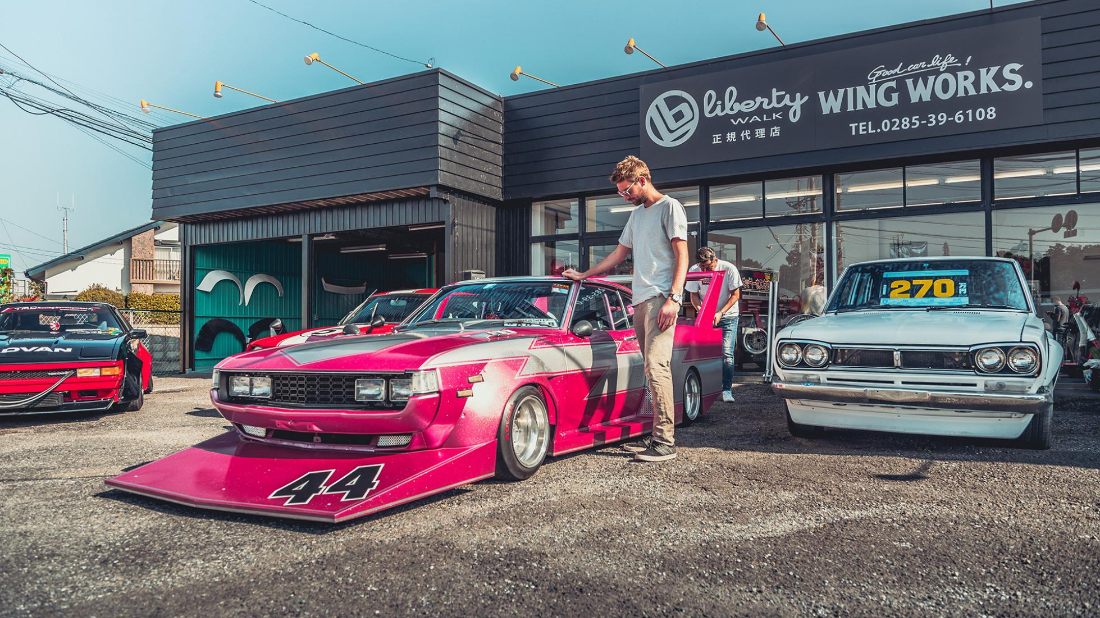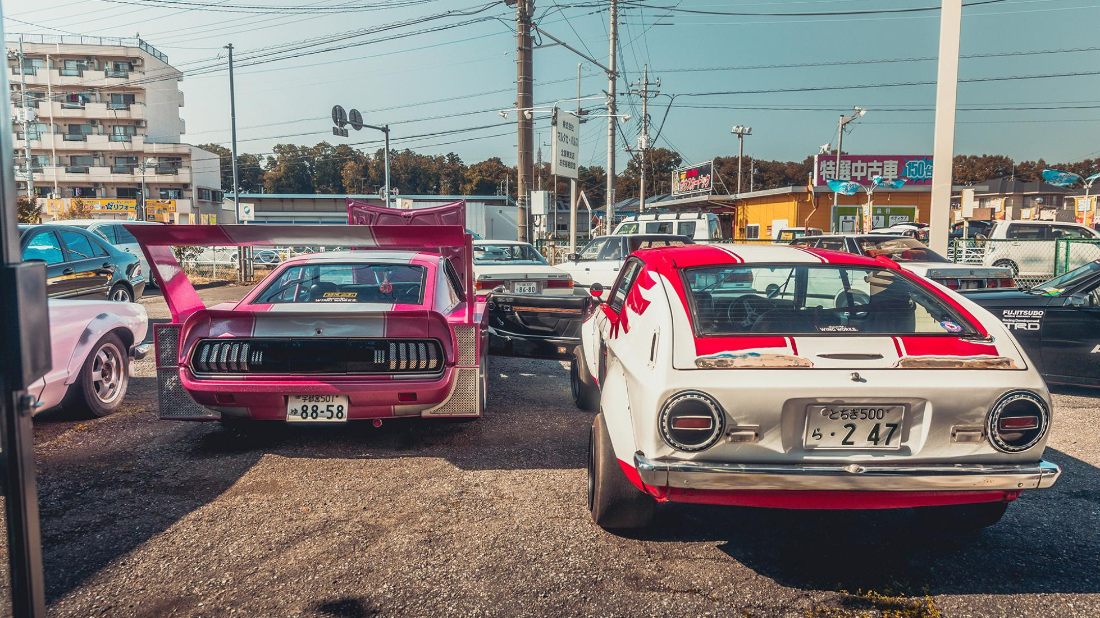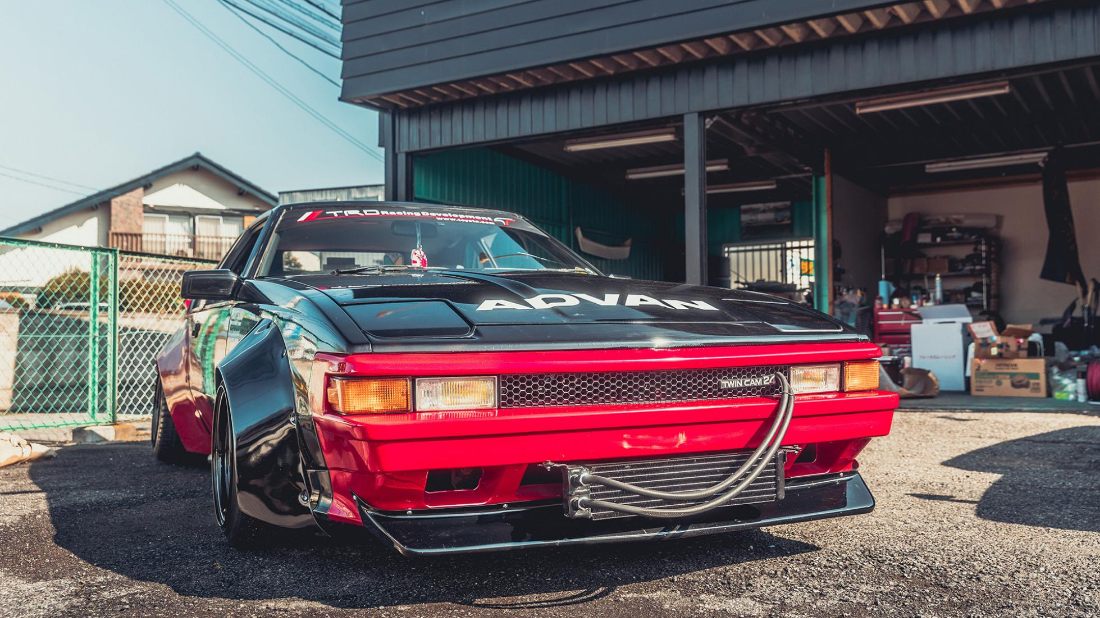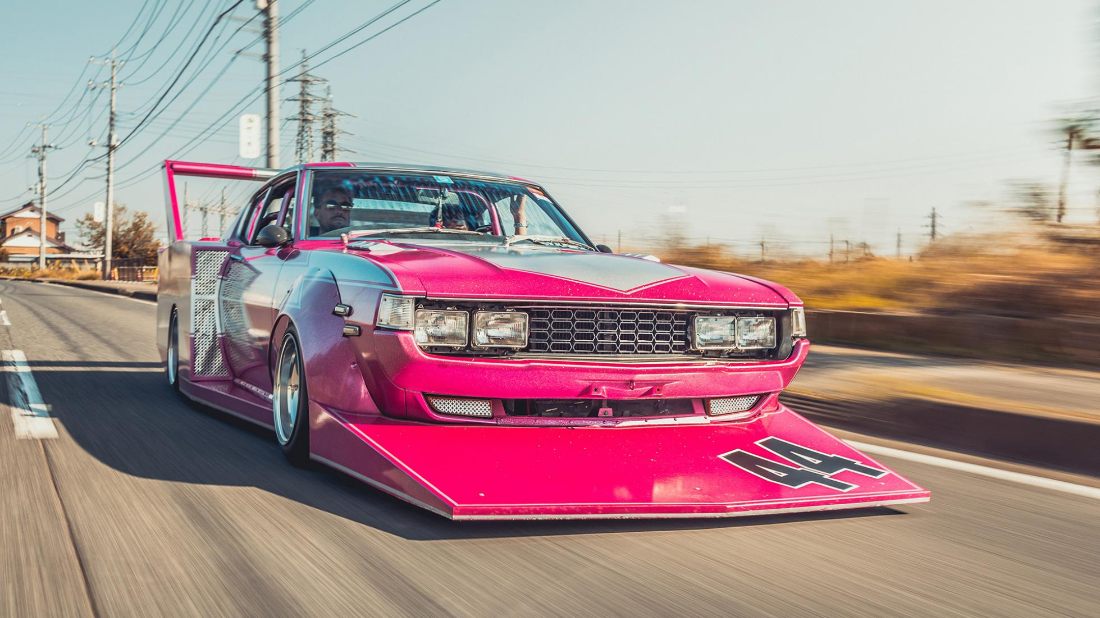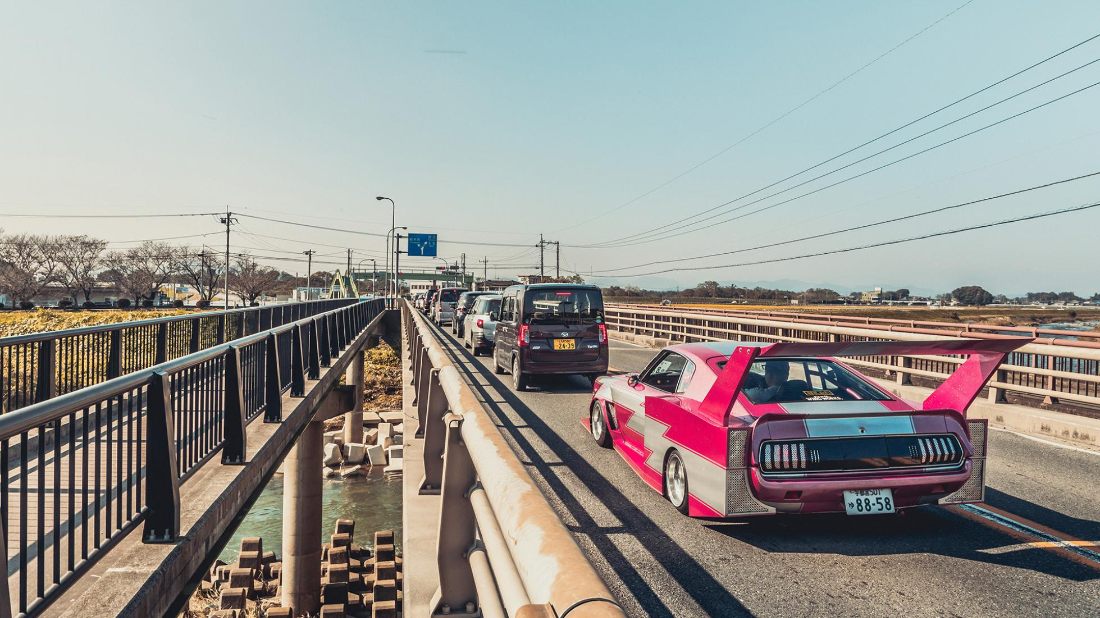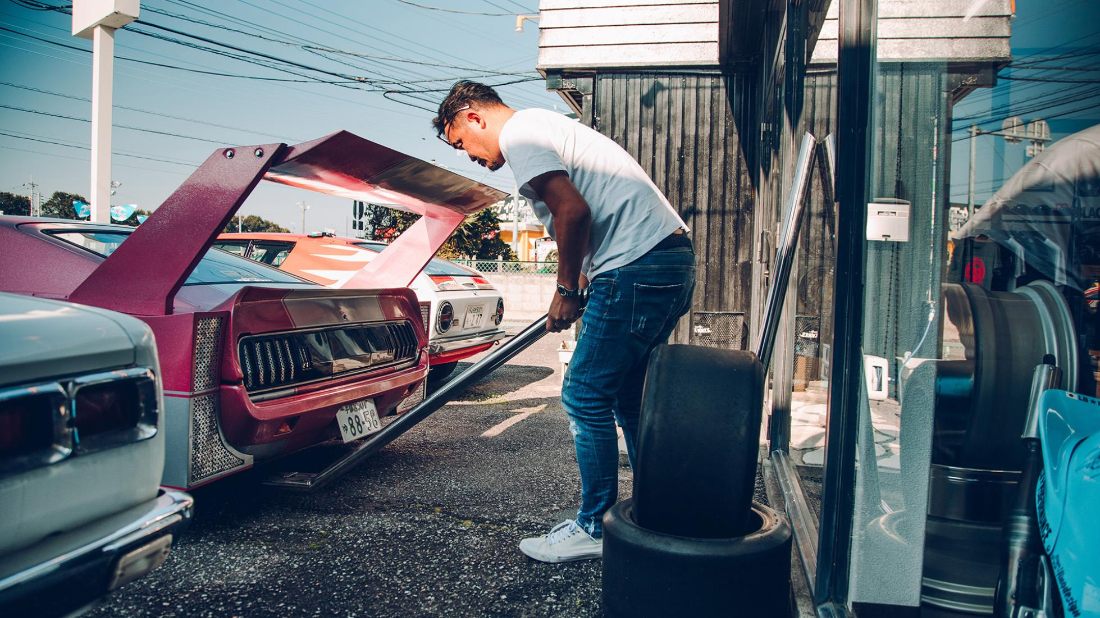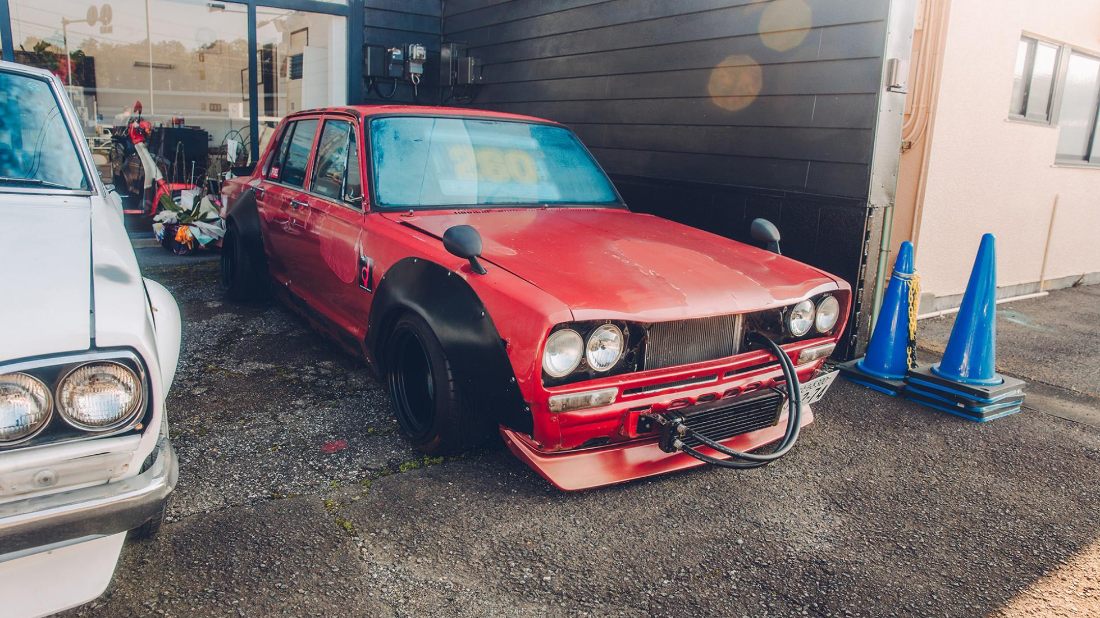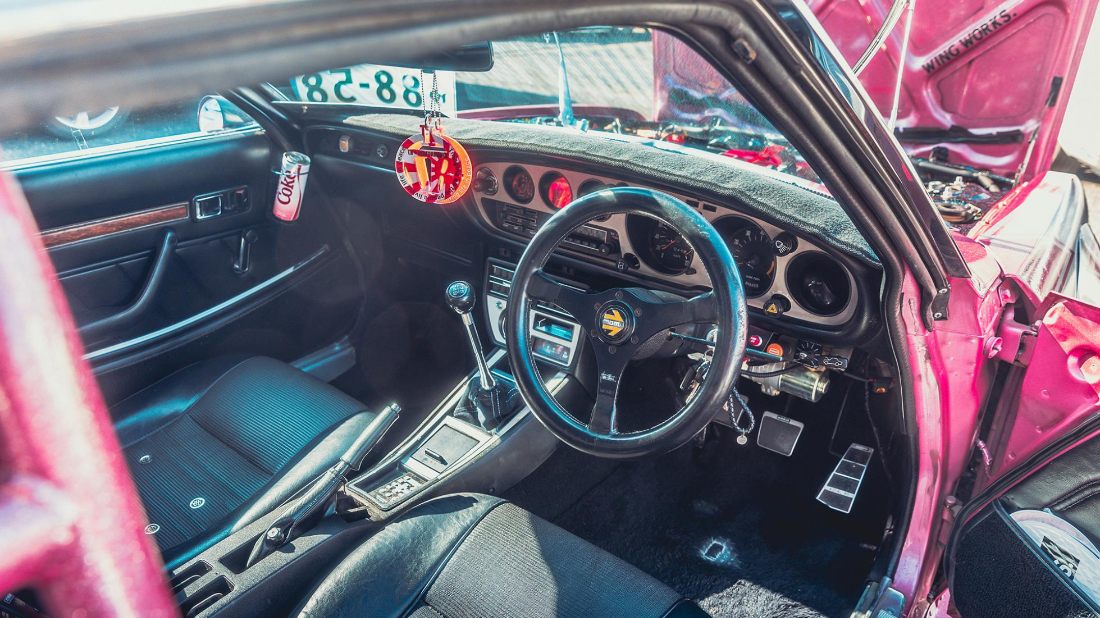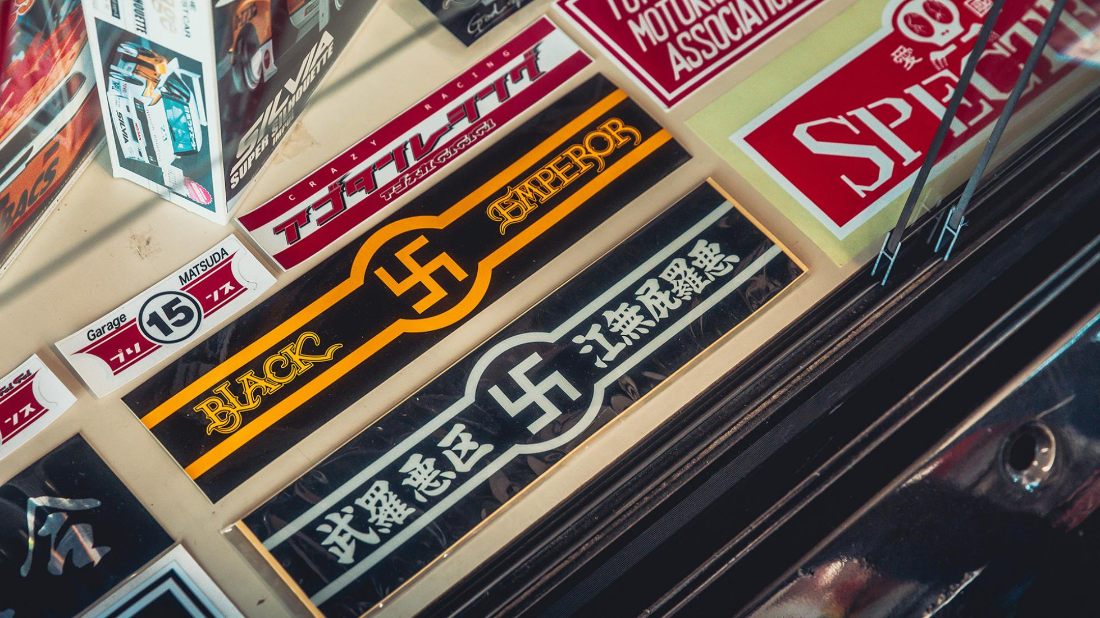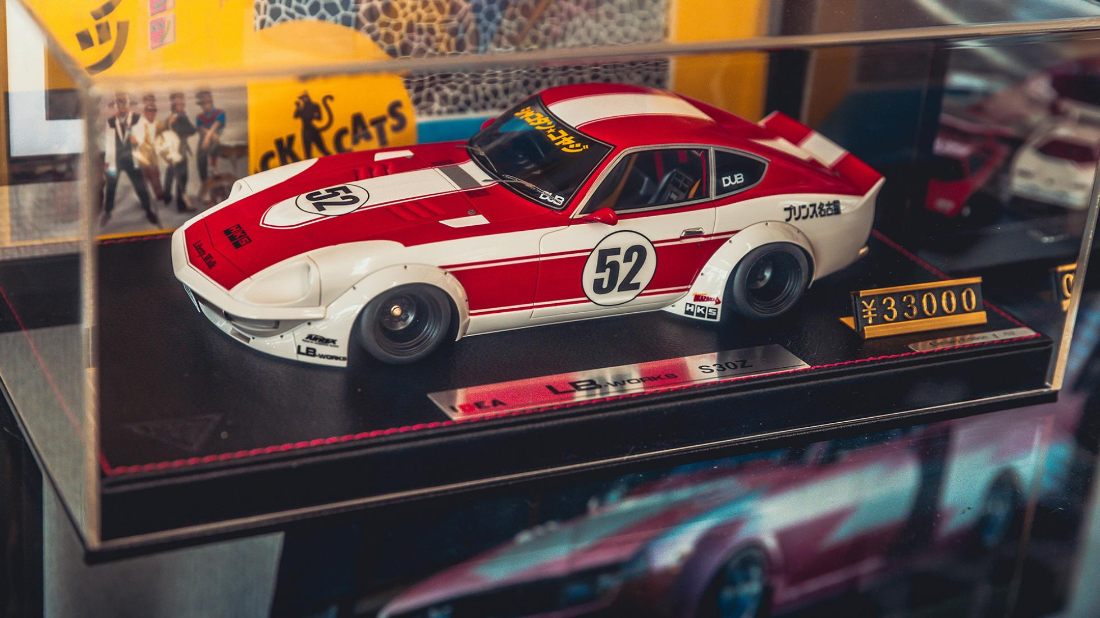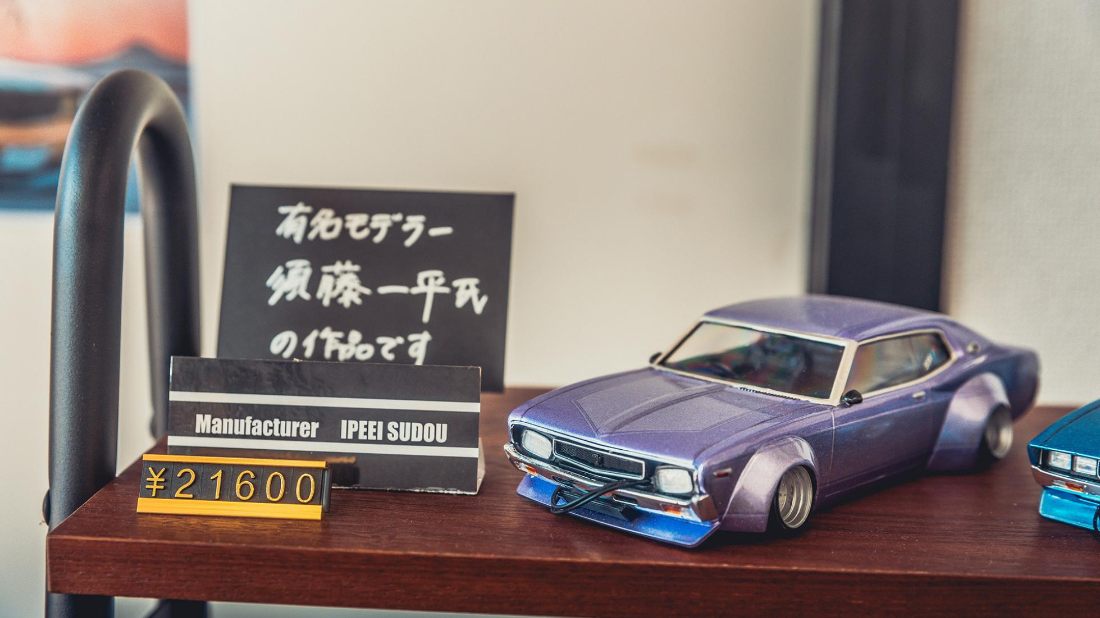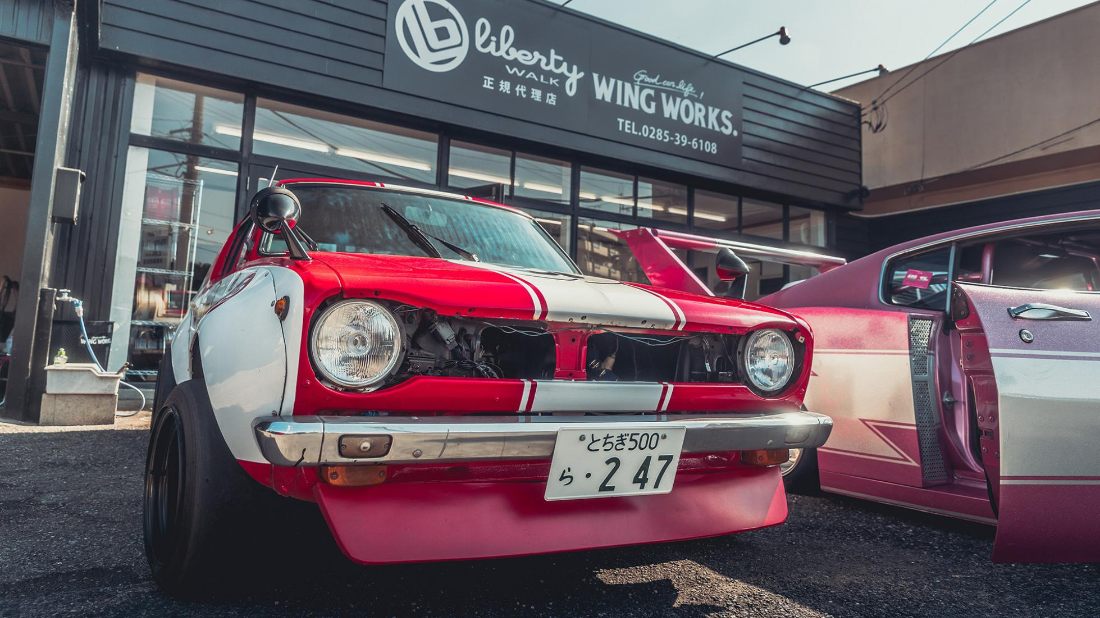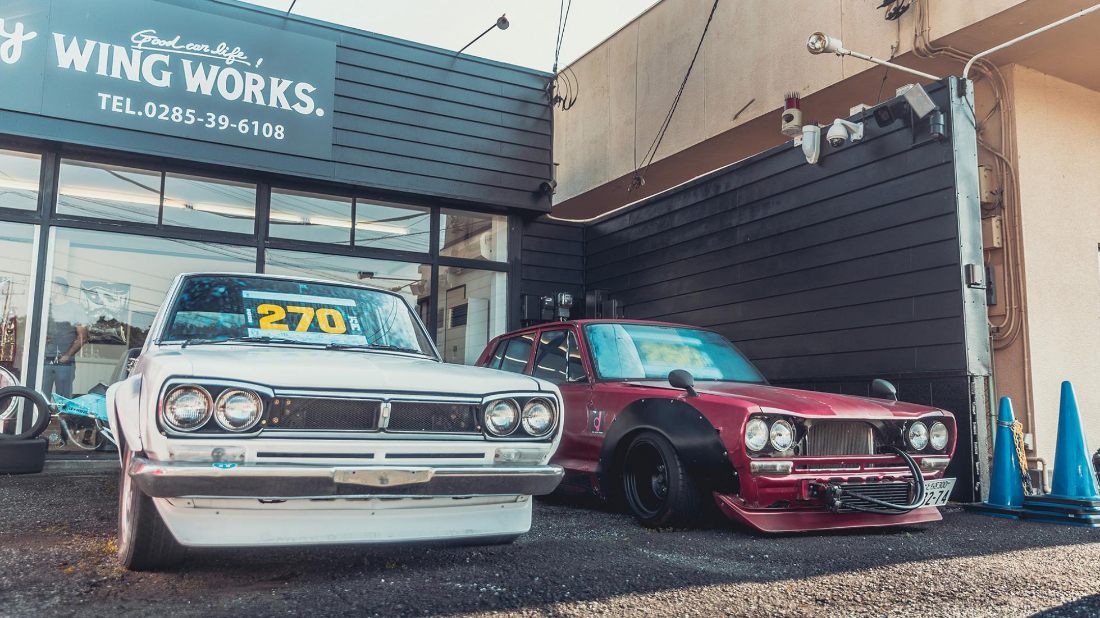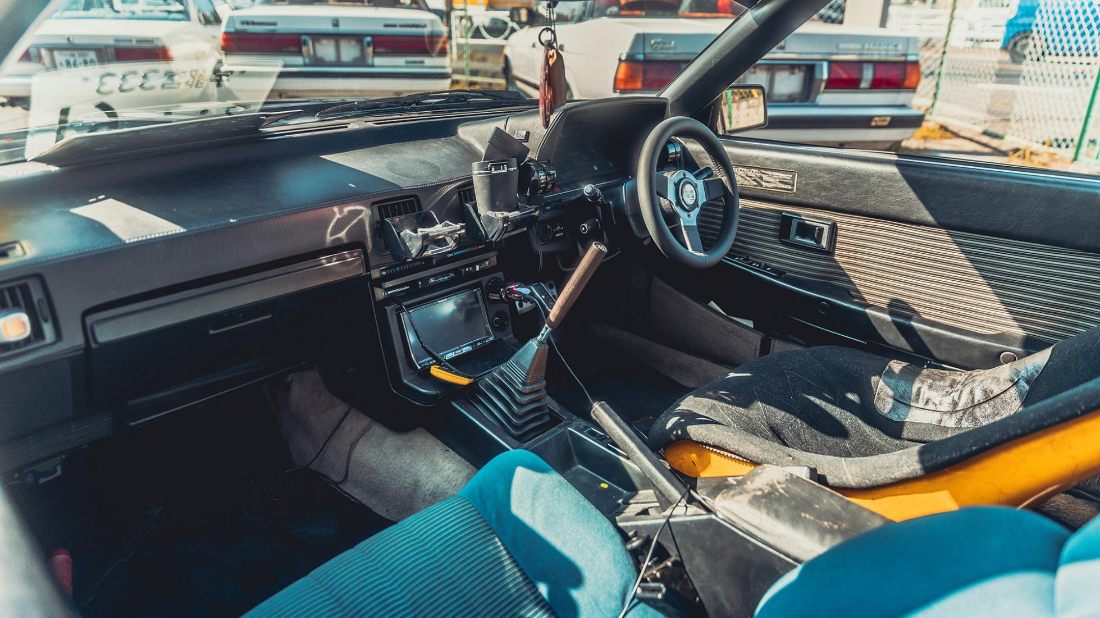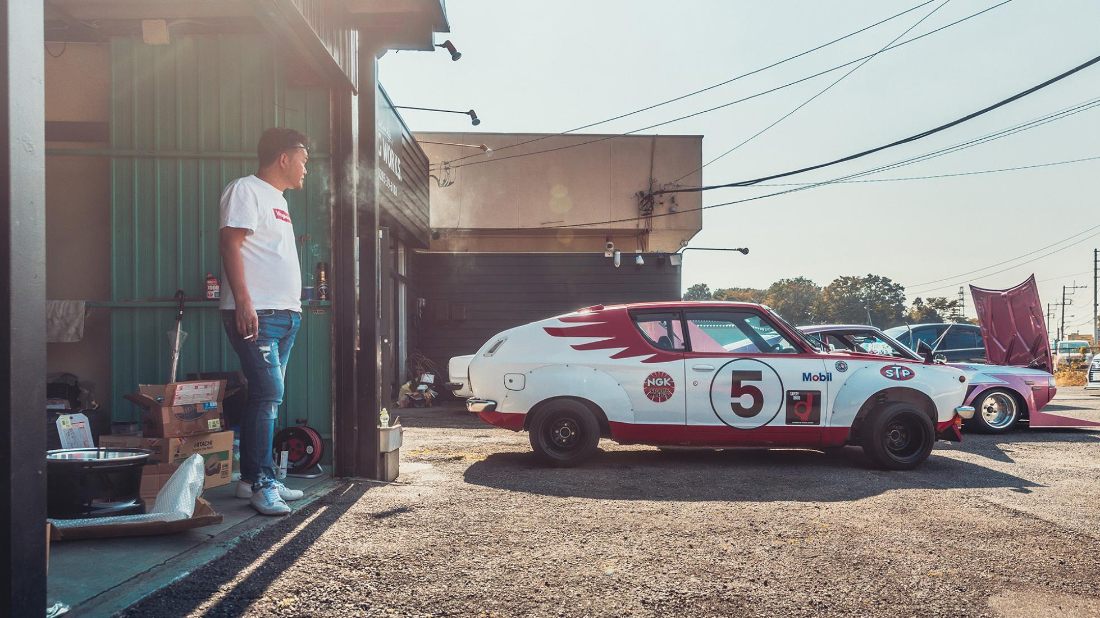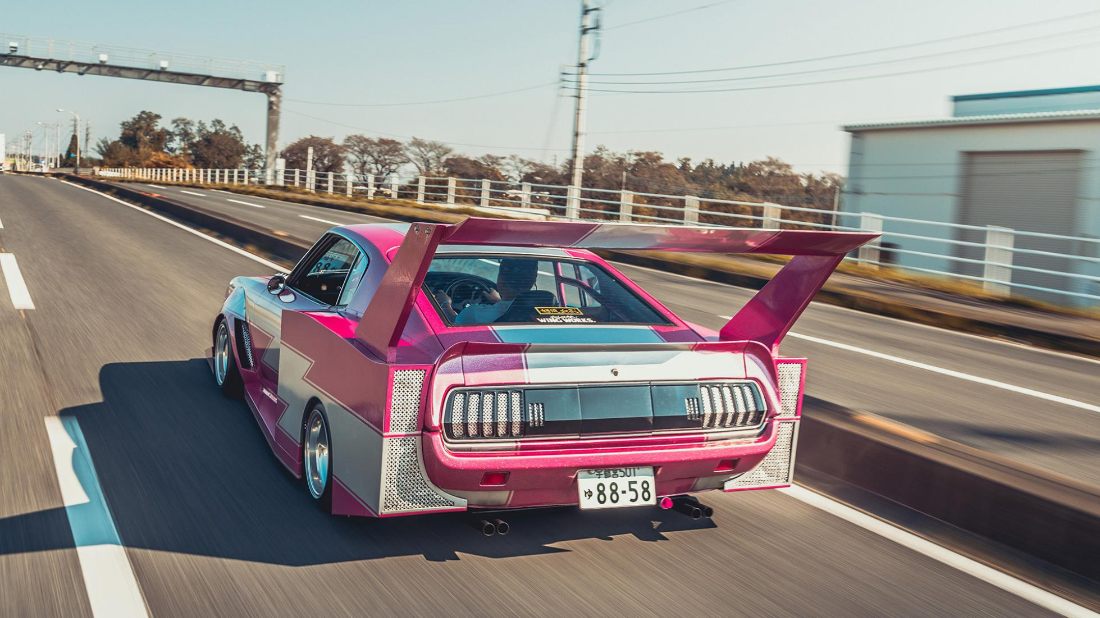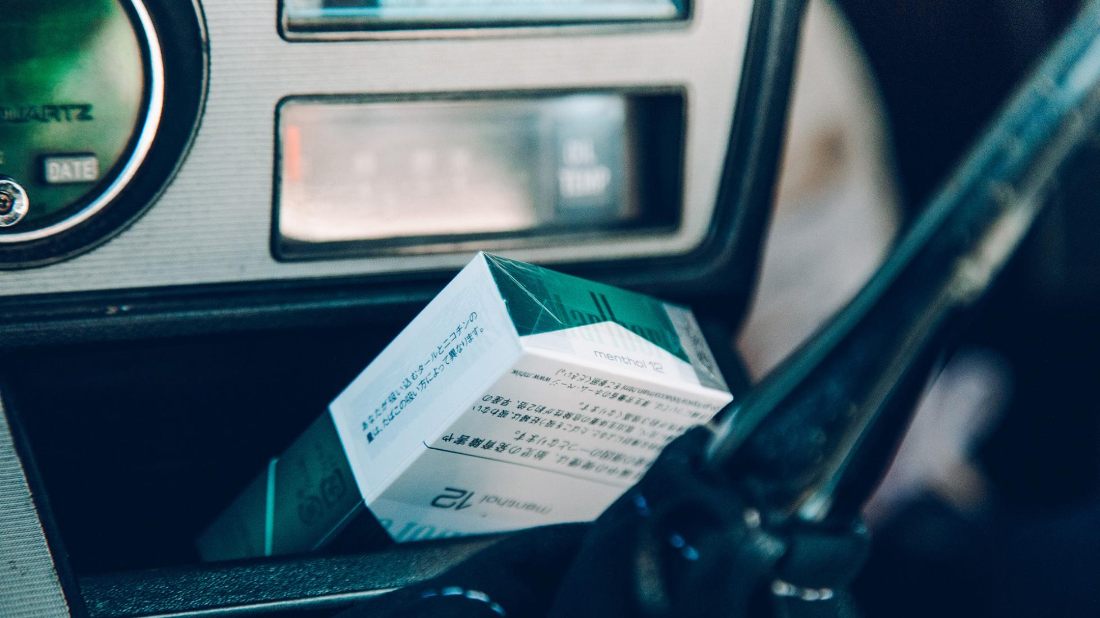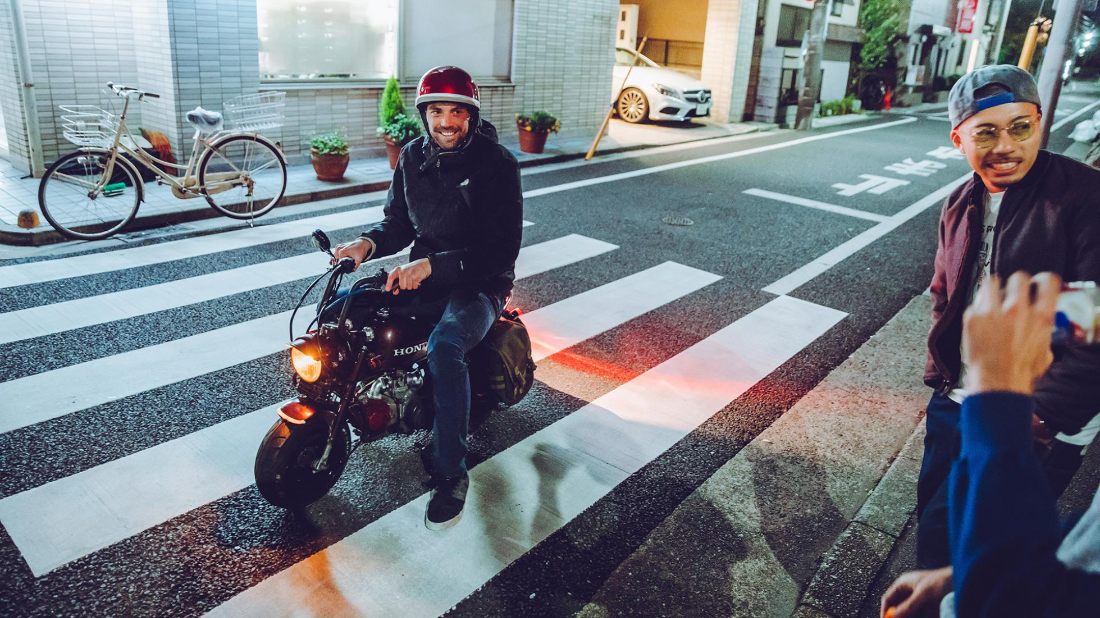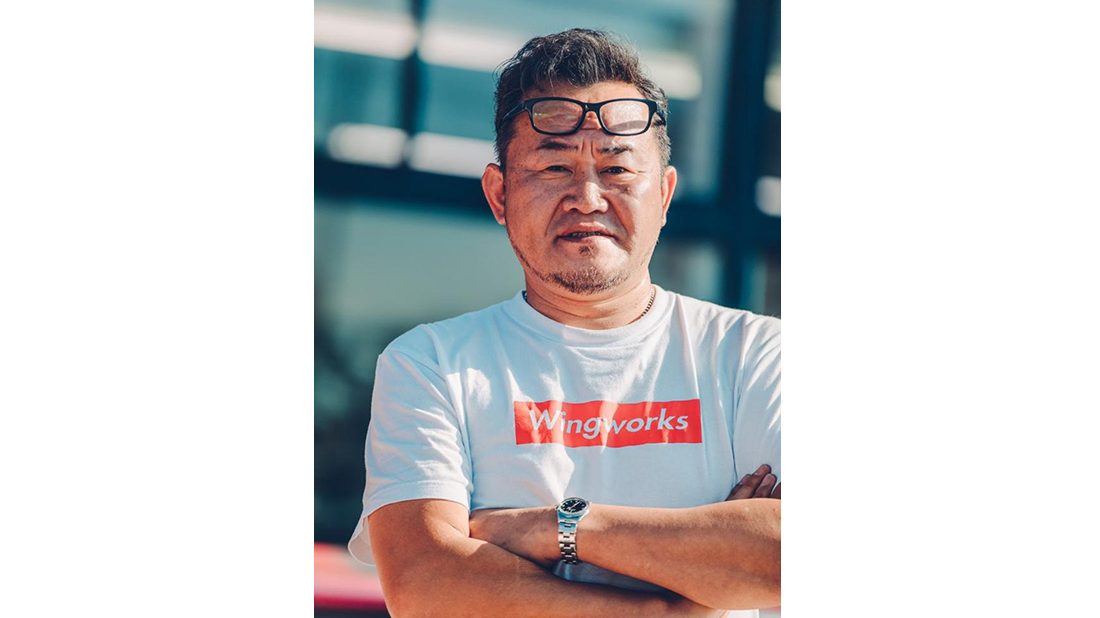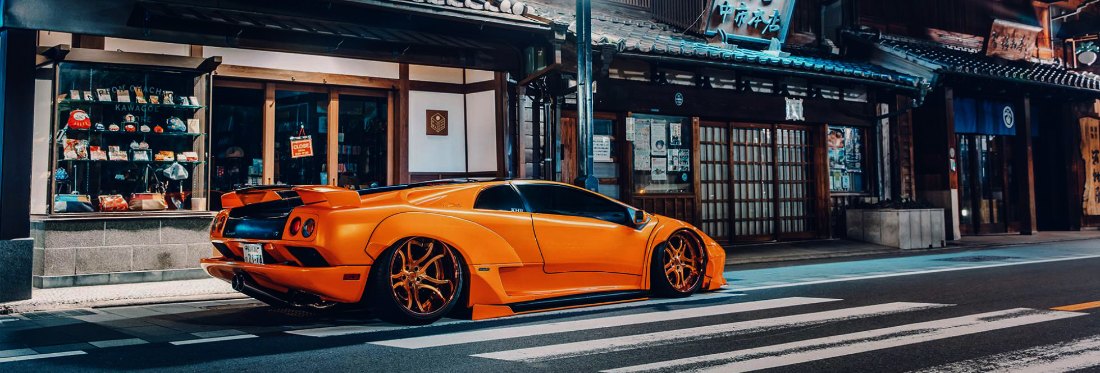
With jet lag spread thick across my brain and the miles to our rendezvous point rattling down, the panic sets in.
Forehead lightly prickled by sweat, I turn to photographer Mark Riccioni for a shot of confidence.
“Where the hell are we? And what the hell have we got ourselves in for?”
“No idea, mate. But what’s the worst that can happen?”
Well, given my late-night research into this exact question consisted of watching people’s index fingers being fed nail-first into cigar cutters, as well as heads smashed in with baseball bats, my conclusion is “quite a lot”.
See, over the last few days, Mark and I have been scrolling through Instagram, cherry-picking people from the deeply hypnotic and bizarre sliver of Japanese car culture called Bōsōzoku.
Bōsōzoku’s roots actually lie in motorbikes. Translating as ‘violent running tribe’, it was a term coined in the Seventies for groups of frustrated youths forming motorbike gangs to cause chaos in order to show their unrest for Japanese societal affluence ever since World War II.
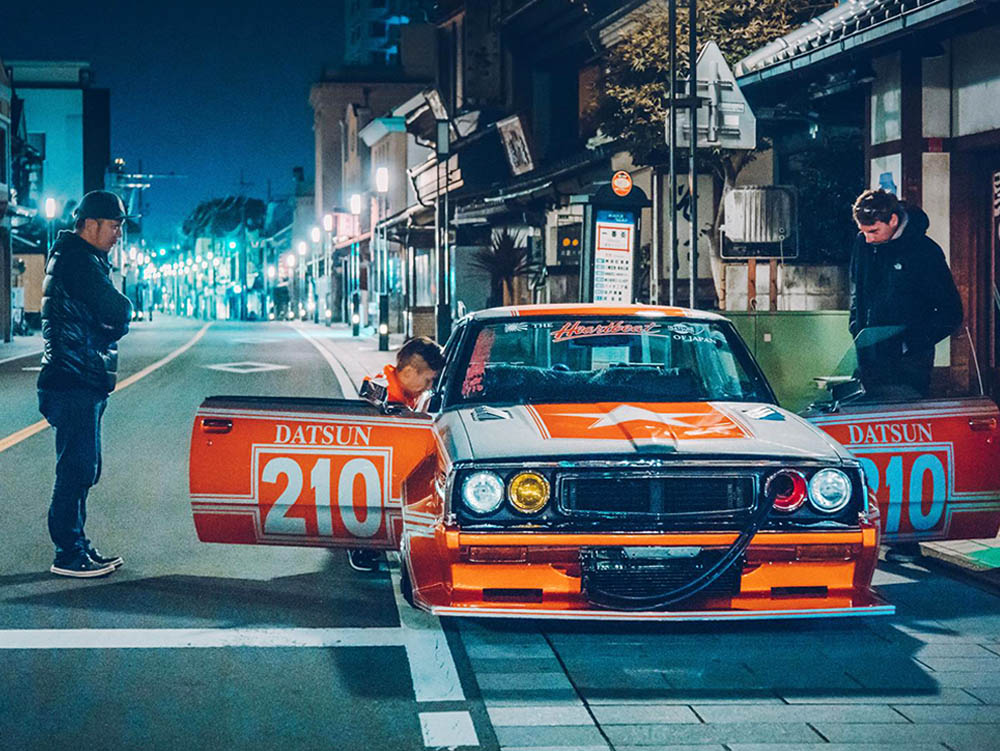
Choosing to modify bikes with protruding fairings, rear seatbacks bigger than the Beckham’s wedding thrones, and stratospheric exhausts, they’d weave in and out of traffic, speeding down city streets in intimidating groups while bouncing their engines off the limiter. They also had a tendency to get a bit fighty.
They were feared. And it was counterculture defined – a two-wheeled social reaction to the new wave of consumption sweeping Japan. But these wild designs and the rebellious philosophy found its way onto cars. Saying that, ‘Bōsōzoku’ style cars have a much broader brushstroke and are harder to define, as they can be further divided into sub-styles.
Which is why Mark and I are somewhere north of Tokyo, currently chasing a Bōsōzoku dream to get closer and experience it first-hand. To do so, we’ve been sparking up conversations with random Bōsōzoku car owners online, trying to get them to meet up with us with the aim to drive/ride their cars/bikes in a sort of cultural two- and four-wheel tasting menu. Agreed, it sounds like the weirdest speed dating event ever. But an added hurdle has been that neither Mark or I speak Japanese, let alone read it. So we’ve been relying on Japan’s answer to WhatsApp (Line) and its hilarious-but-semi-usable English translations plus a wild variety of very odd Japanese emoji stickers.
Day One
As we pull into downtown Kawagoe to meet two bookmarks of the Bōsōzoku spectrum (an old-school Kaido Racer Nissan Skyline, and new-school, wide-arched, slammed Lamborghini Diablo), the nerves rise. Mainly because I have a horrible feeling that I may have accidentally sent the Japanese equivalent of the eggplant emoji to an angry gang member last night instead of a thumbs-up.
Unsurprisingly, the noise hits us first. The unmistakable idle of a Lamborghini V12 rings through the air – helpfully amplified by straight pipes – so we can tune into their location. Turning a corner, we find them. Which, given the Skyline has four lightning-shaped chrome takeyari exhaust stacks reaching six feet into the air behind it, isn’t hard.
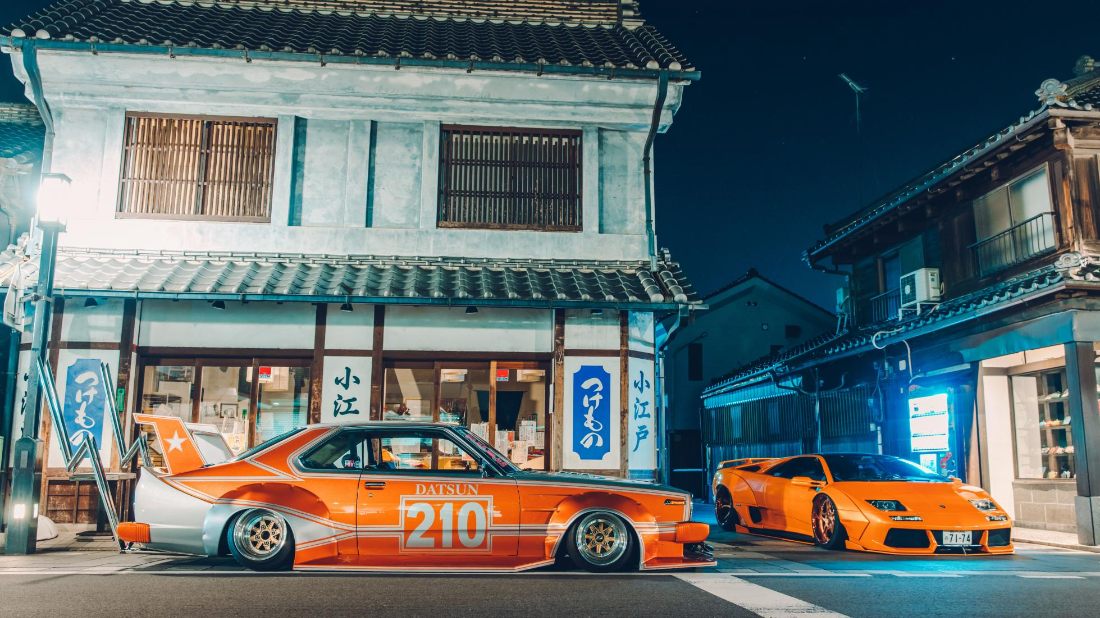
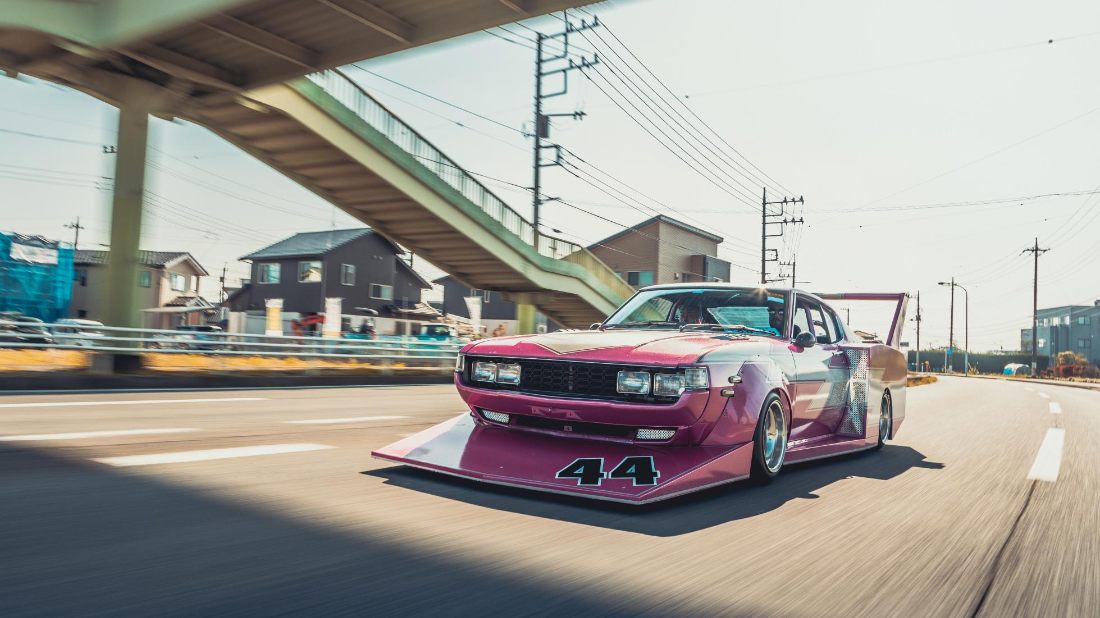
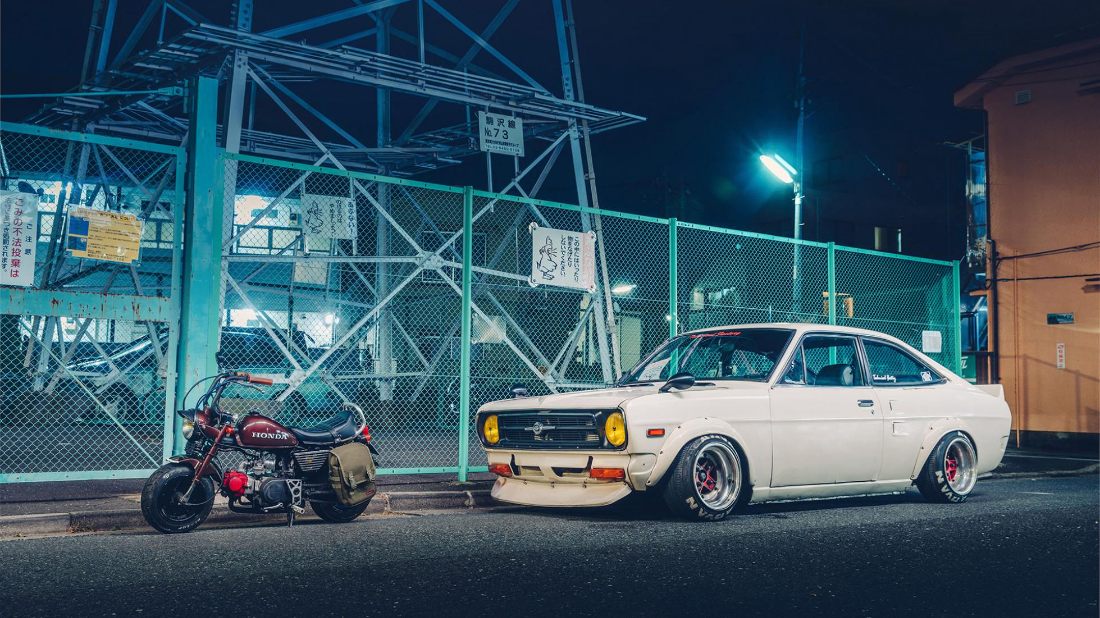
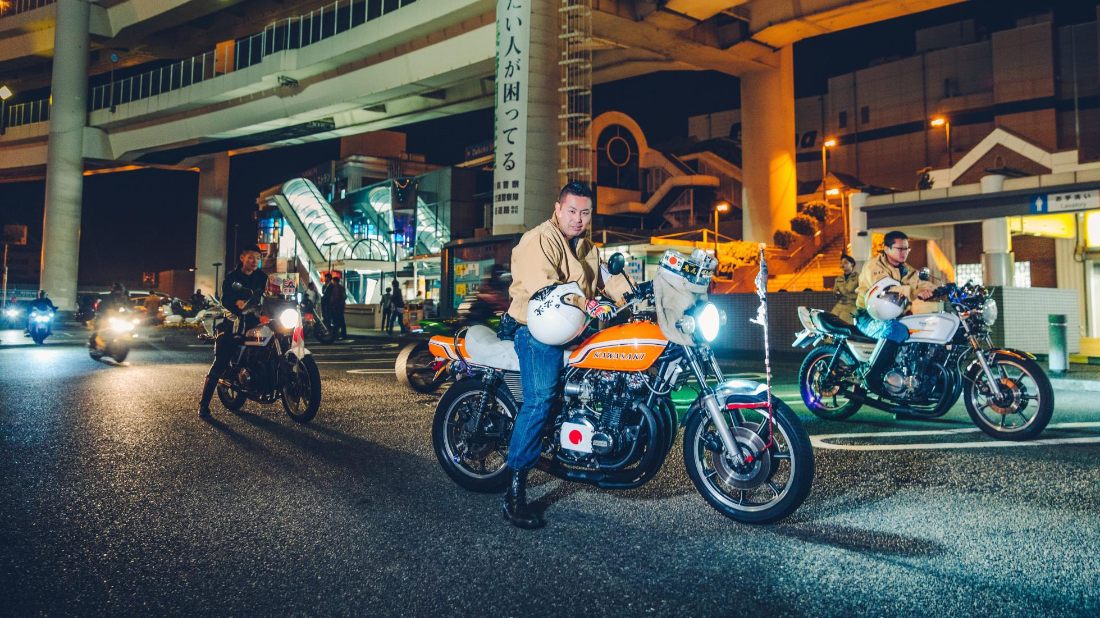
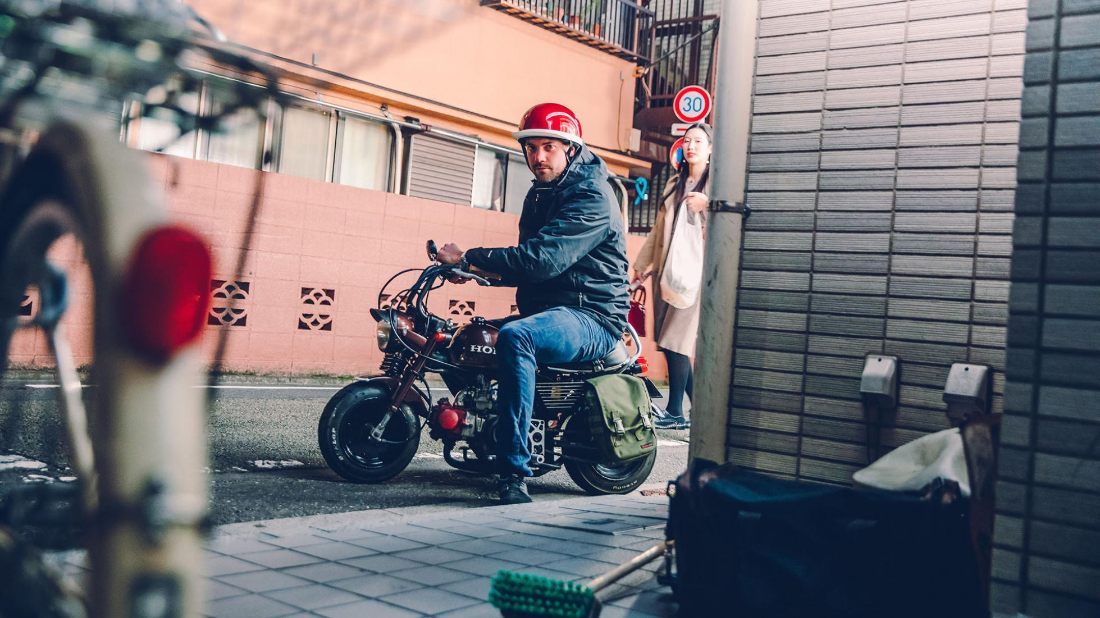
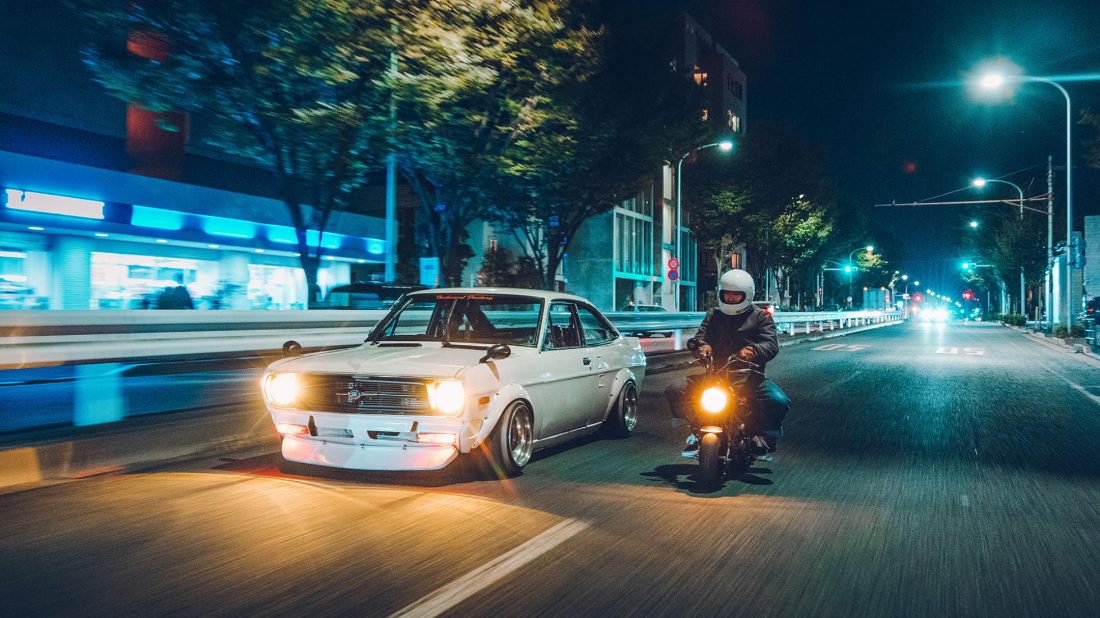
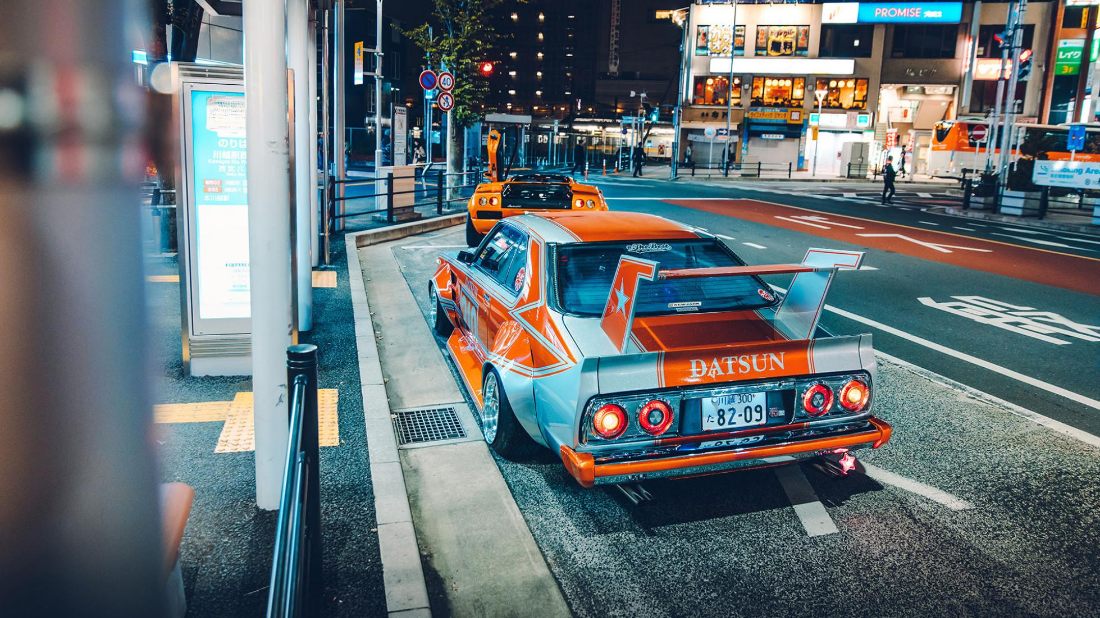
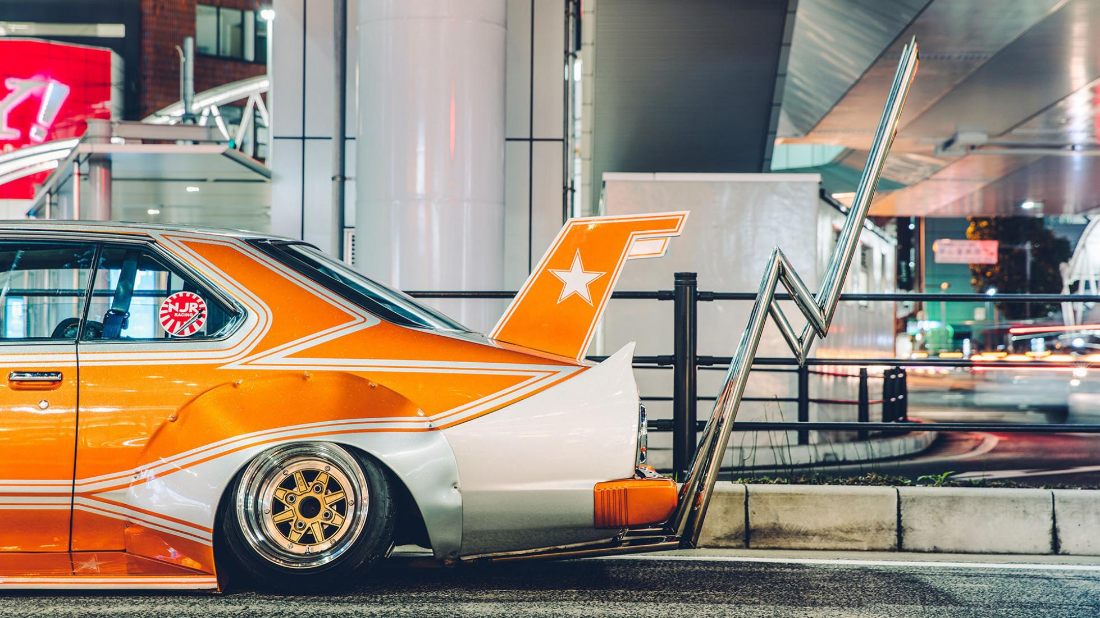
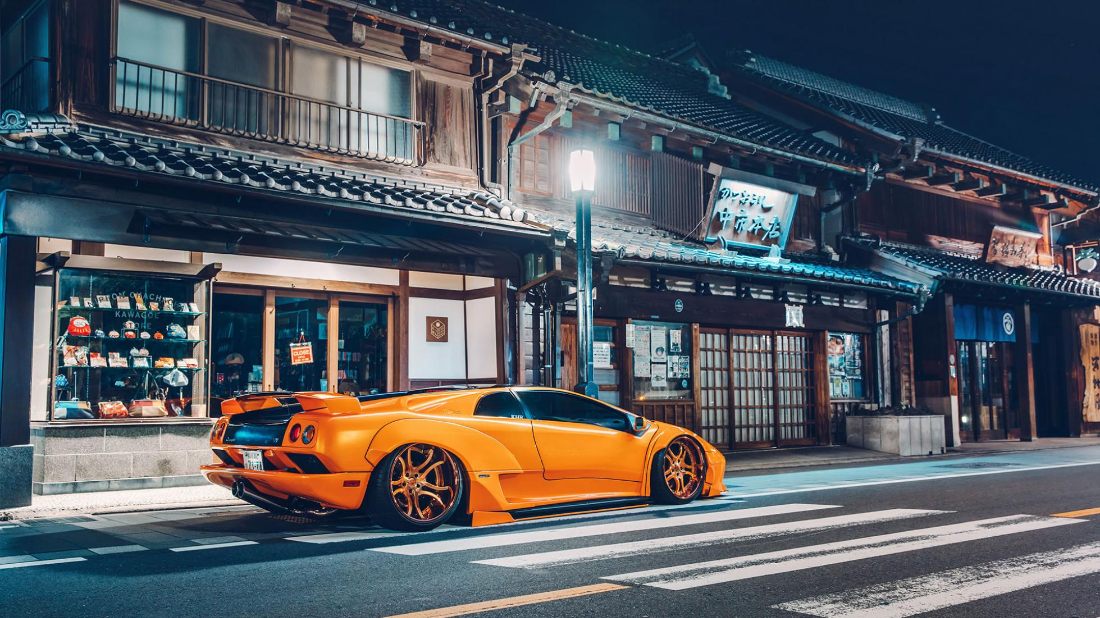
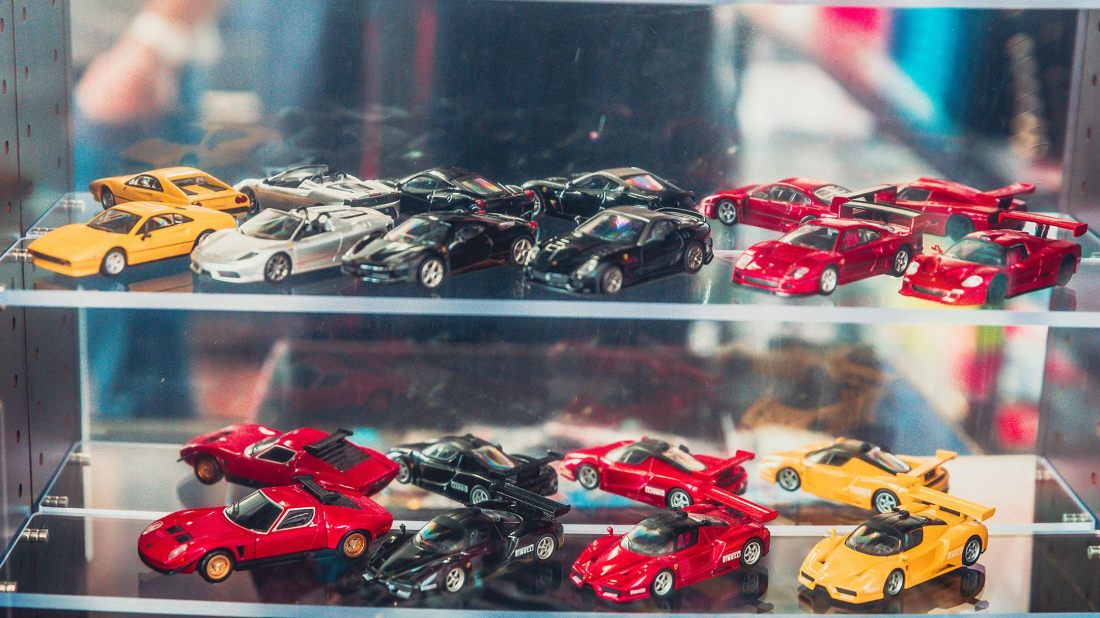
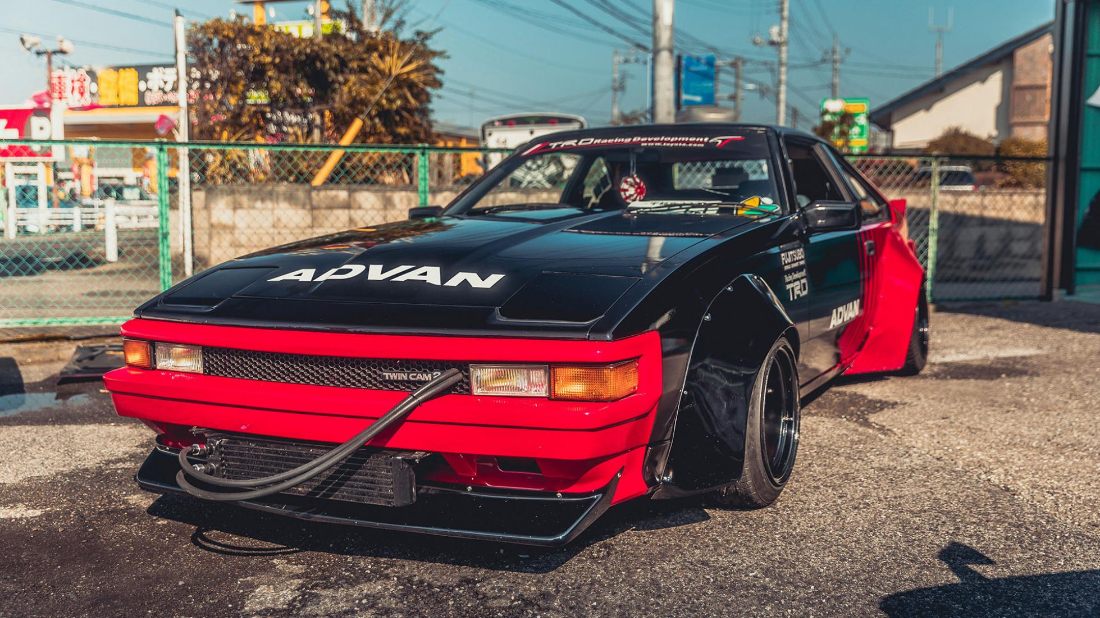
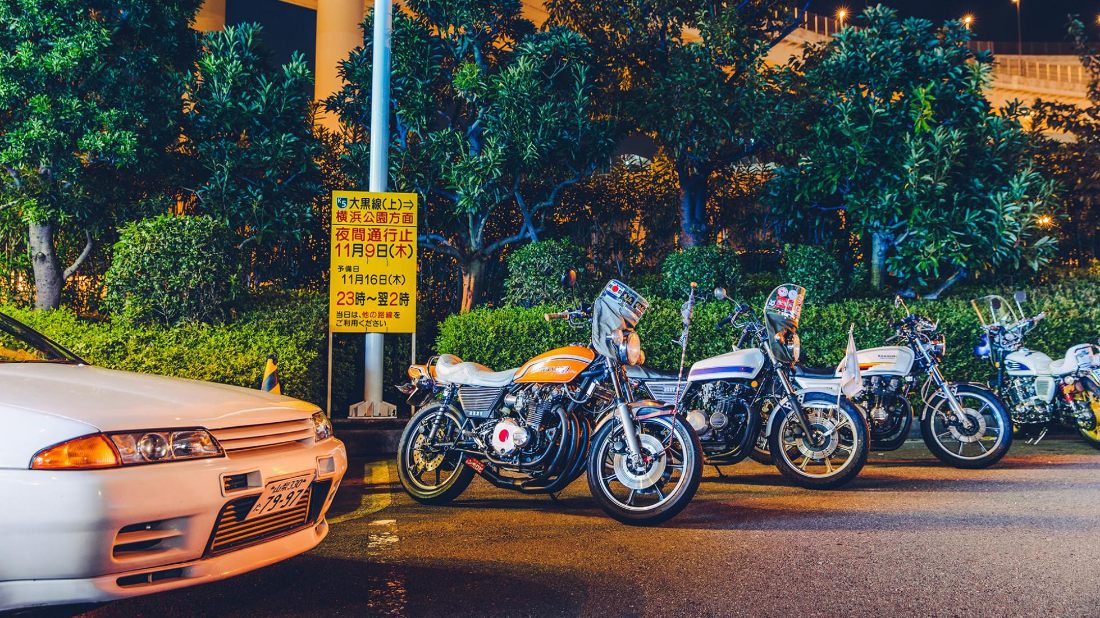
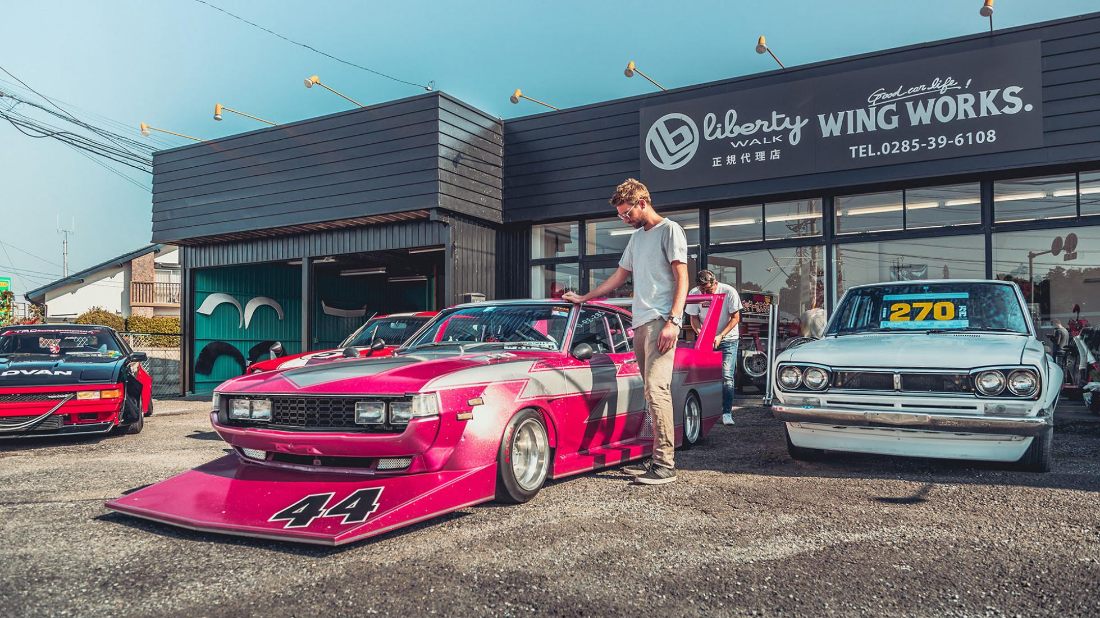
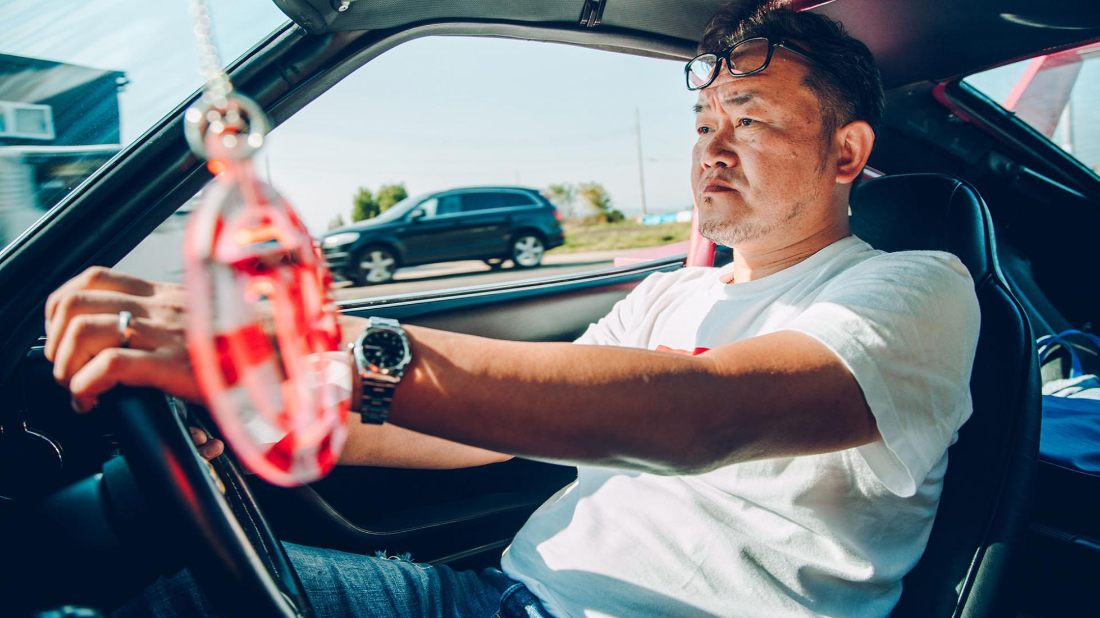
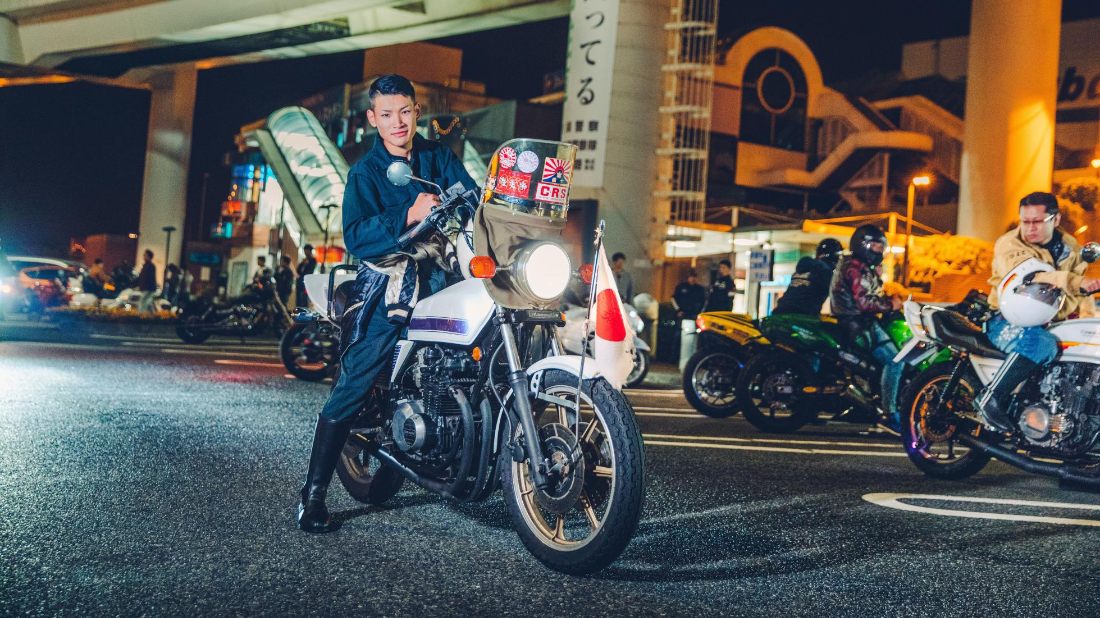
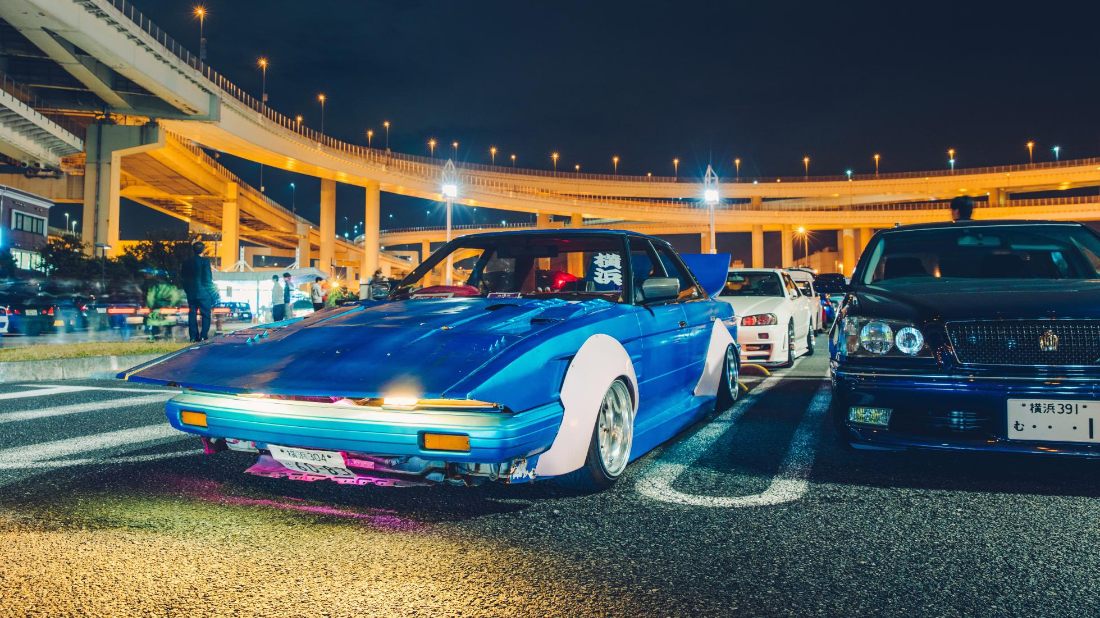
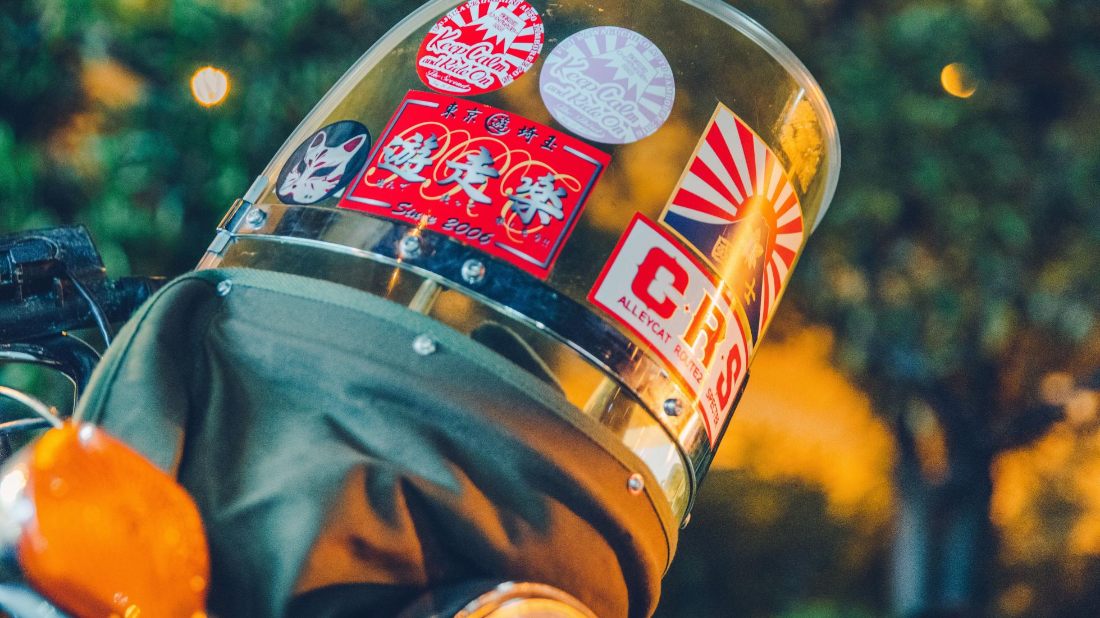
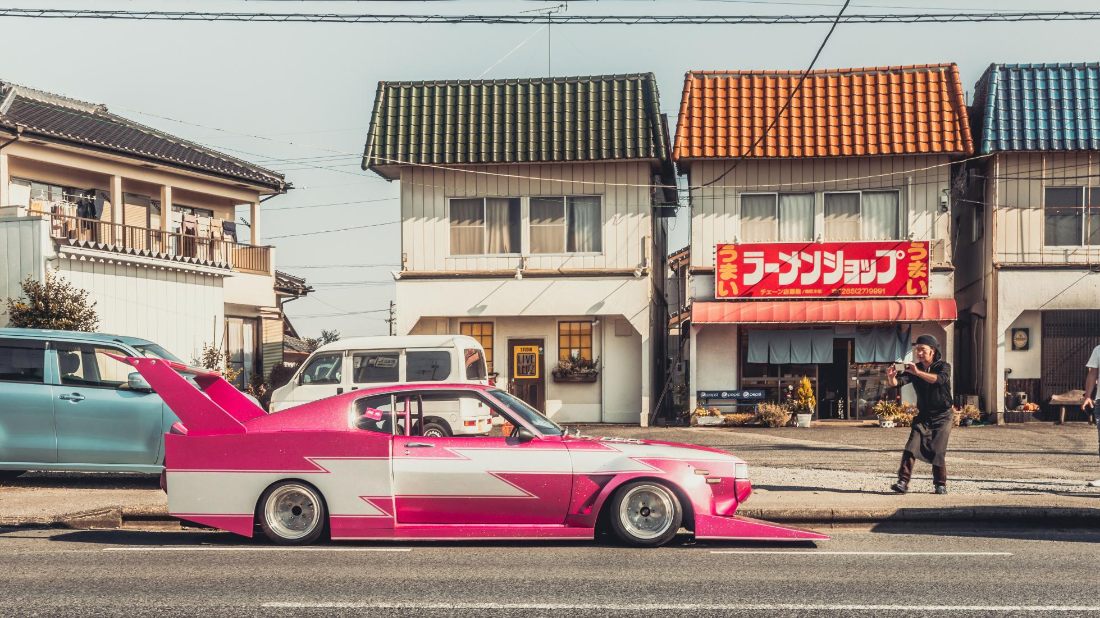
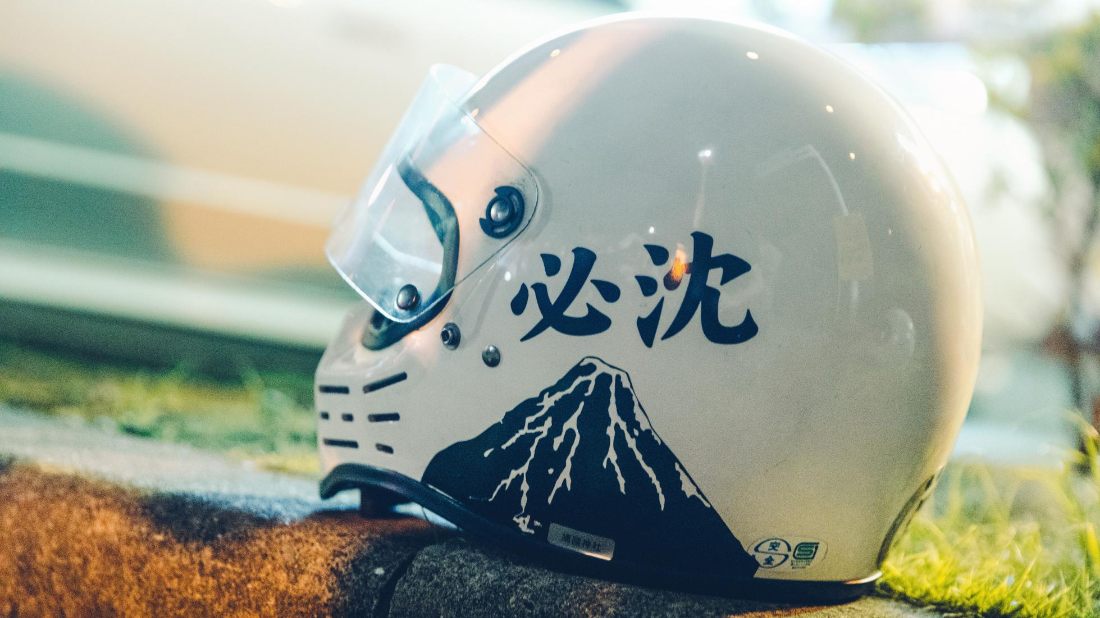
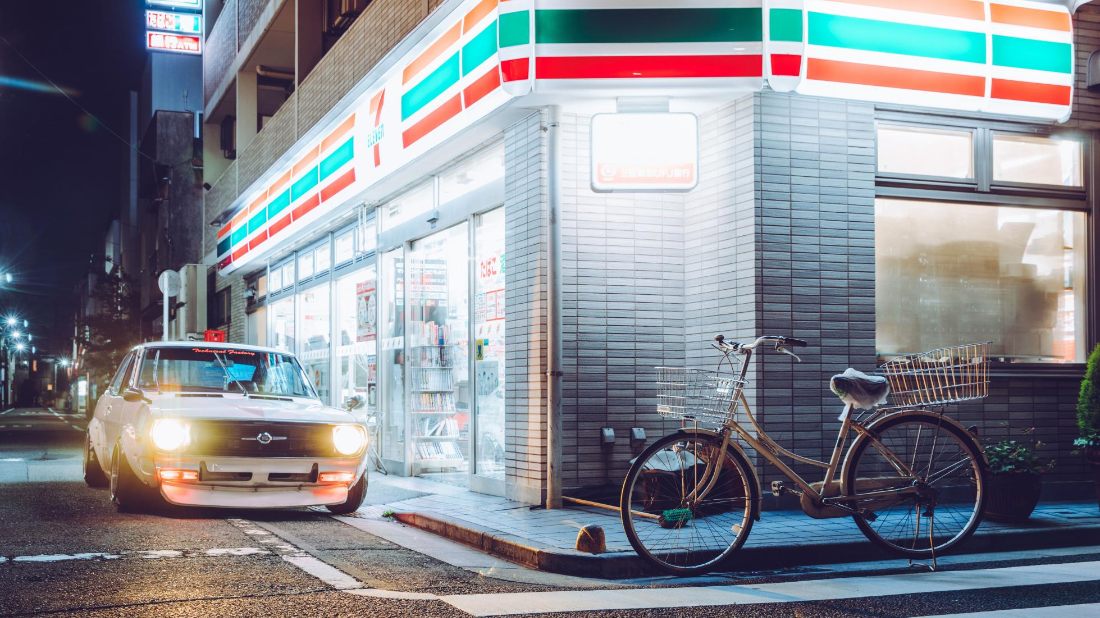
The iconic scissor doors cut open into the midnight sky and two little legs swing out. In a movement never achieved in the history of getting out of Lamborghinis (let alone one where the bodywork is kissing the floor), Souki – the owner of both cars – springs out.
With two-and-a-half trendy haircuts on his head, jazzy trousers, spangly shoes and a disarming smile, he doesn’t look a bit like the angry Bōsōzoku type Google Images had me believe. In fact, he’s a big EDM DJ in Tokyo. Just obsessed with the look and feel of old-school Bōsōzoku cars. The only similarity to the gang members of old is his bomber jacket stitched with patchworks of western profanities, a kind of new-wave tokko fuku jacket that the bikers had. Just a lot less nationalistic.
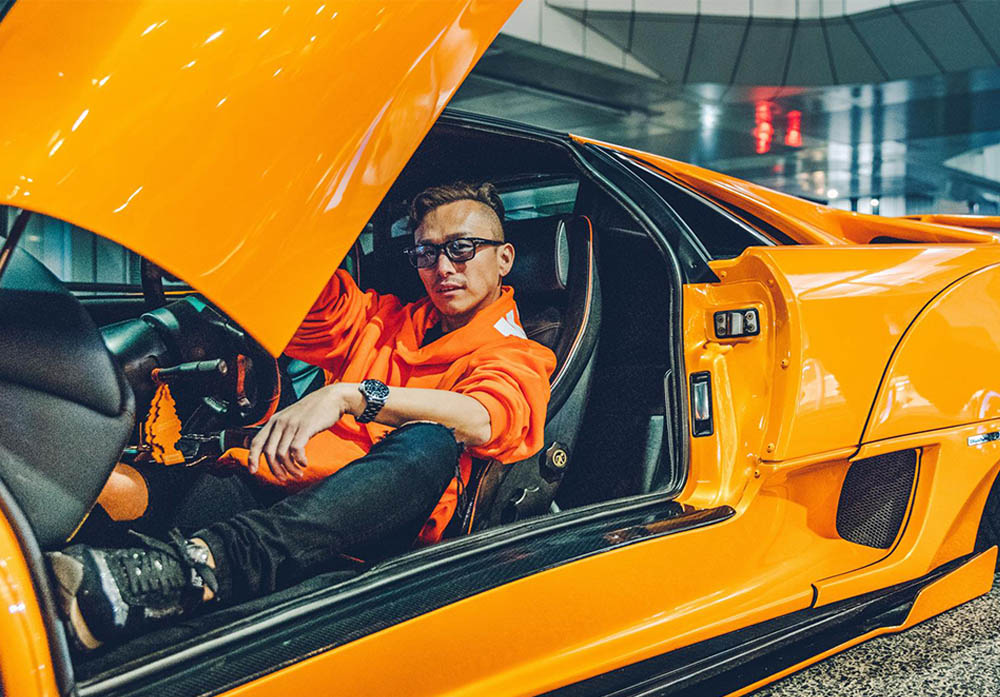
Leaving a snail trail of slobber around his cars, we soak up the details. The candy orange and silver Skyline is a work of art. A true obsessive, Souki stripped the imperfect bodywork right back before building it up by hand and adding a cocktail of Bōsō hallmarks and low-rider-style paint. The deppa – or bucktooth front splitter – acts as a handy shelf for the external oil-cooler that’s plumbed in through the headlight. The side skirts should be measured in square feet and the whole car sits bottomed out on the floor as much as possible, thanks to air ride. The monstrous over fenders house tiny-diameter wheels shod in slick tyres with crazy camber.
And they’re both loud. REALLY loud. Which, unsurprisingly, catches the attention of the police. Not knowing exactly how illegal these cars are, I fear the worst and start doing a lot of bowing. Souki pulls out a spiked purse blooming with yen, which turns out to be a better solution than my endless bowing. Details taken, the rozzers let us go… but only if we’re quiet. Something Souki mishears as he drops the Diablo’s clutch and lets the limiter rip into the red line until streams of fire cascade out the back. After a quick cruise around town, the cars fade into the darkness for us to only ever see them again on Instagram. I have to drive one.
Day Two
Thanks to Souki’s friendly demeanour, the next day my index finger feels more relaxed. The threat of gang violence has declined. Statistics show that actual kick-ya-head-in Bōsōzoku gangs peaked in 1982 with 42,500 members. But thanks to police crackdowns, they’re now on the brink of extinction. Thankfully for us car fans, the wild aesthetic remains part of the social fabric.
We fire up the Line app to see if anyone is keen for us to drive their car, and we strike gold. Hirokatsu Hosoi – owner of a wild 1974 Toyota RA25 Celica 2000GT – invites us to his shop (Wingworks) to have a go. We respond with our best broken Japanese and an emoji with a man giving a thumbs up behind a Ferrari Dino. We’re on.
Wingworks is in the industrial city of Oyama. An hour and a half north of downtown Tokyo, the run-down streets feel an age away from the futuristic glassy jungle of Tokyo. Even though I’ve thrown Hirokatsu hundreds of Instagram likes in the past, nothing quite prepares for the sight outside his shop. There’s the zig-zagged electric pink and silver Celica inspired by the flame-spitting touring cars from the Japanese Super Silhouette Series. Flanking that, his son’s Celica double X with pearlescent Mazda Savanna arches and his wife’s Nissan Cherry X1R racecar replica. There’s also a handful of Hakosuka Skylines in various states of Frankenstein. We all but combust with excitement.
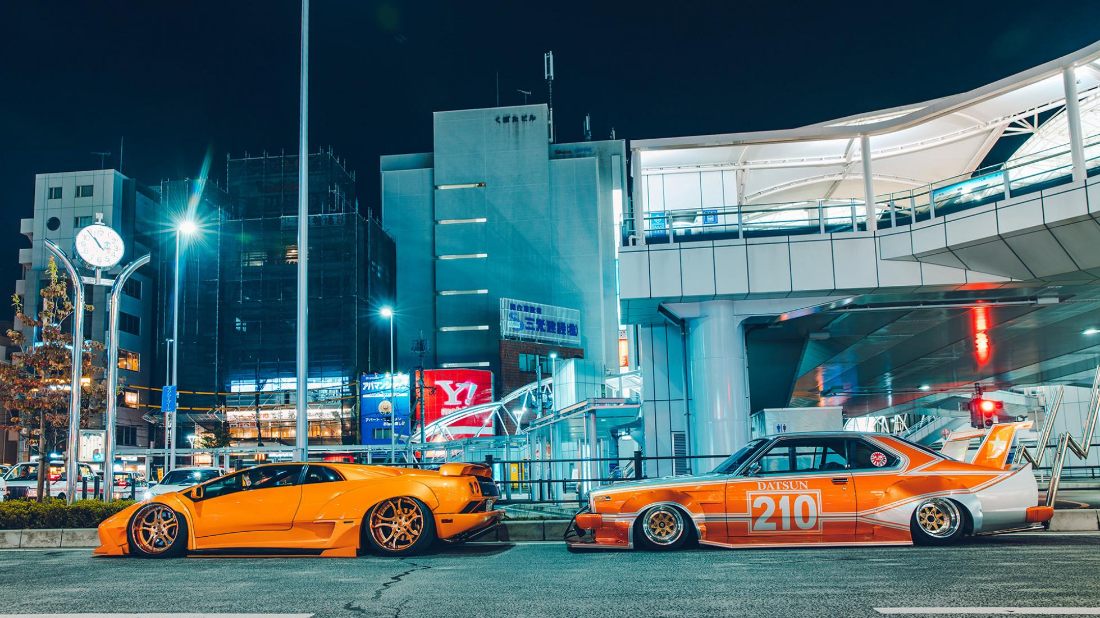
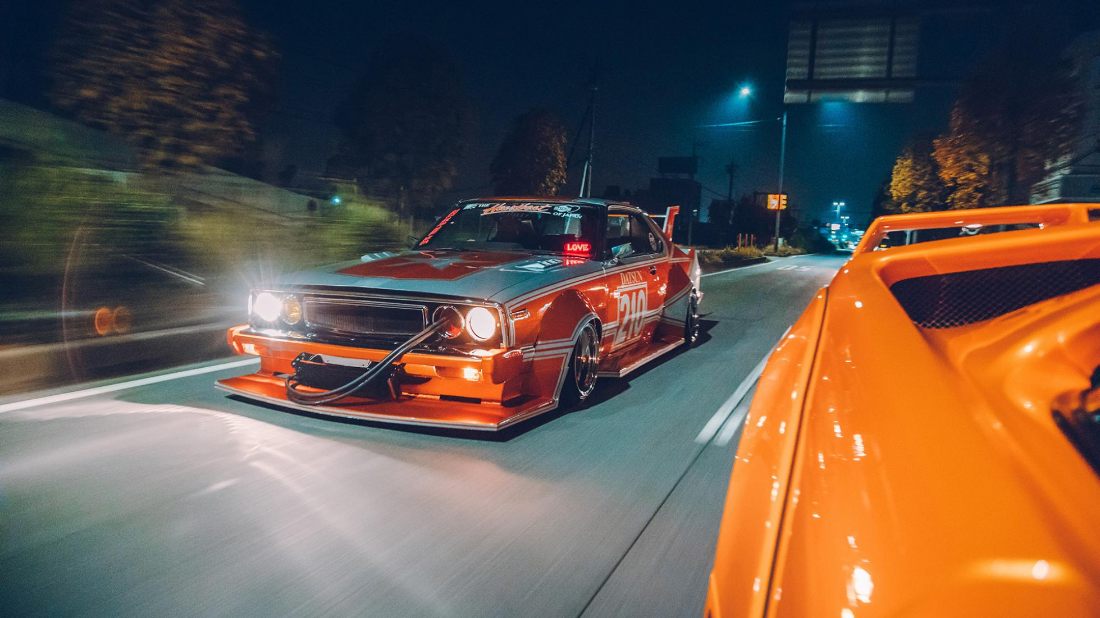
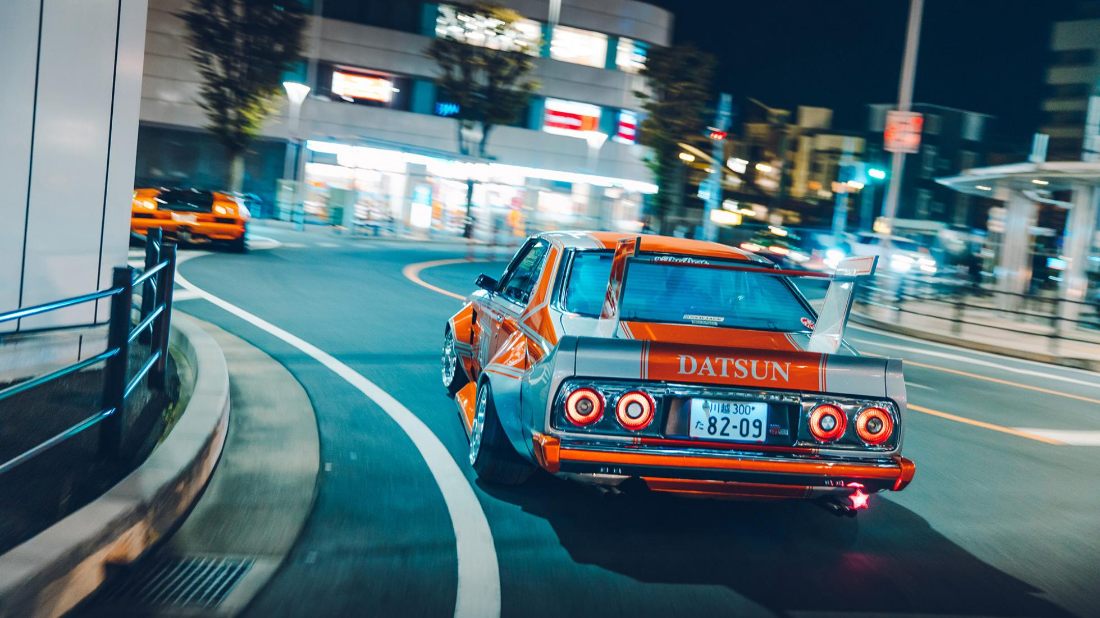
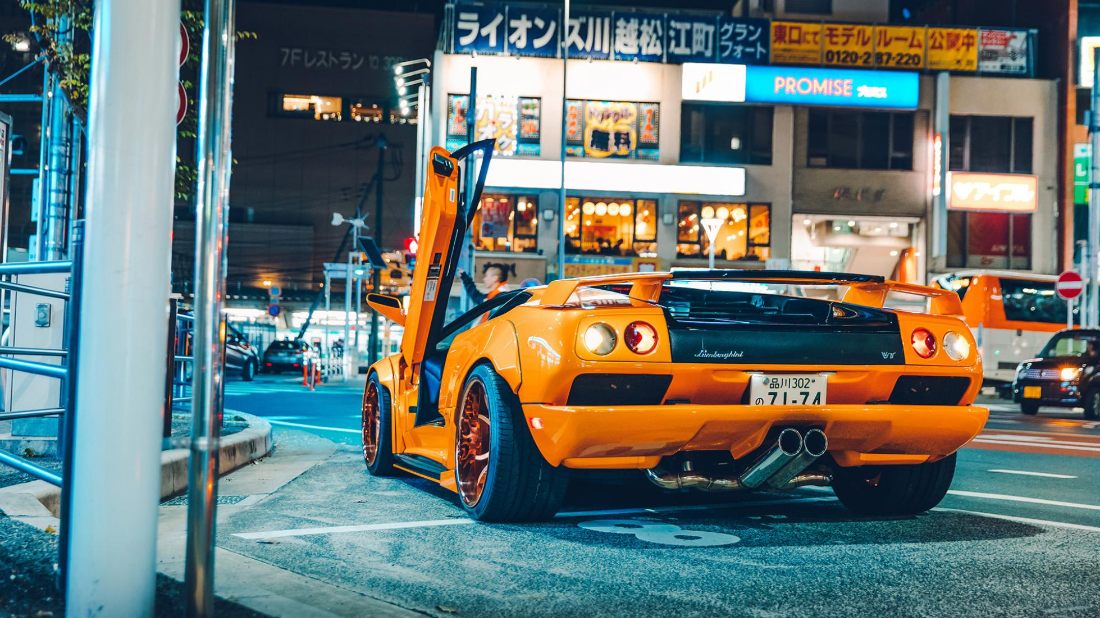
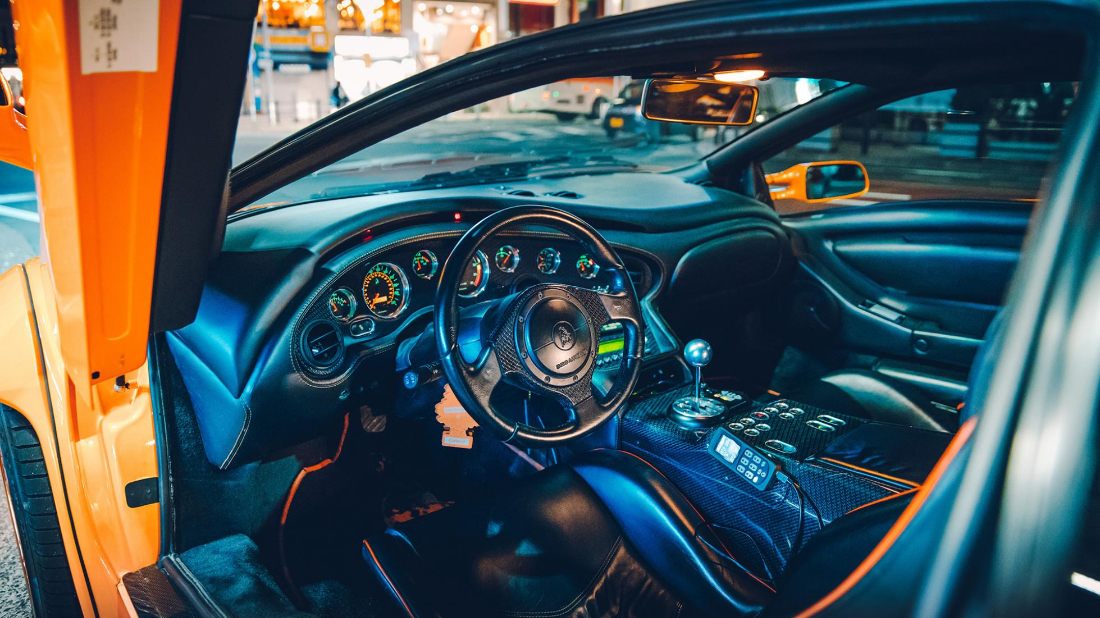
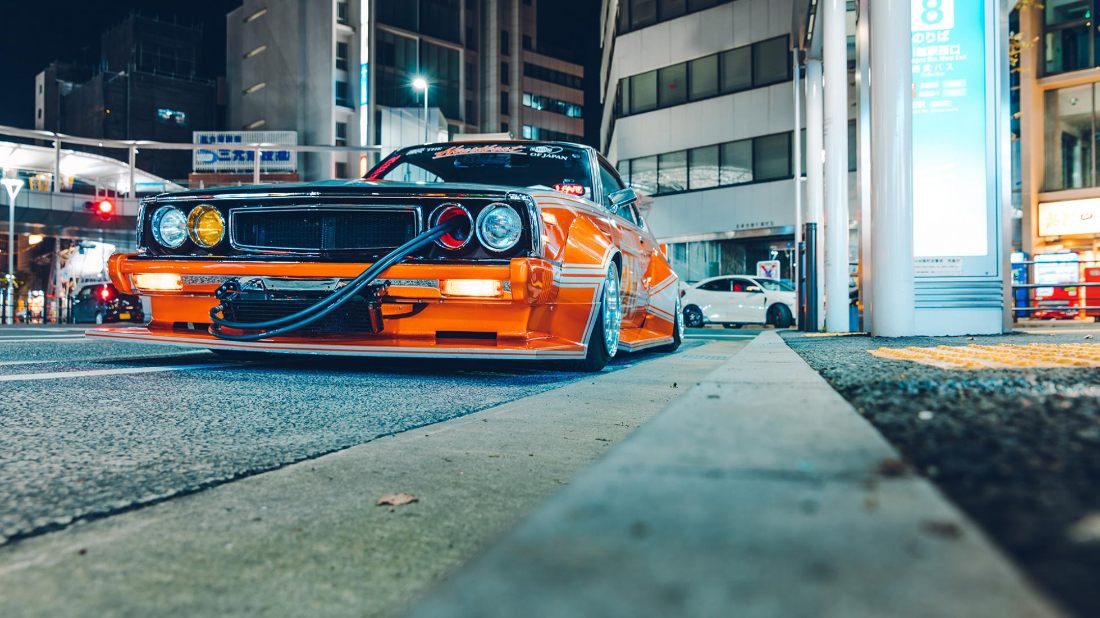
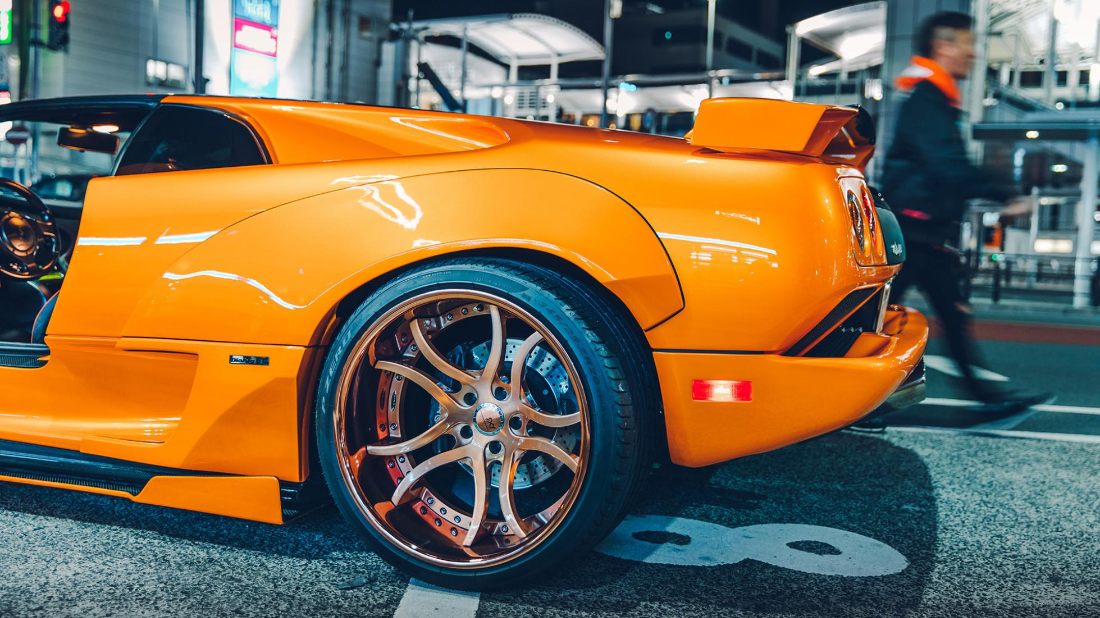
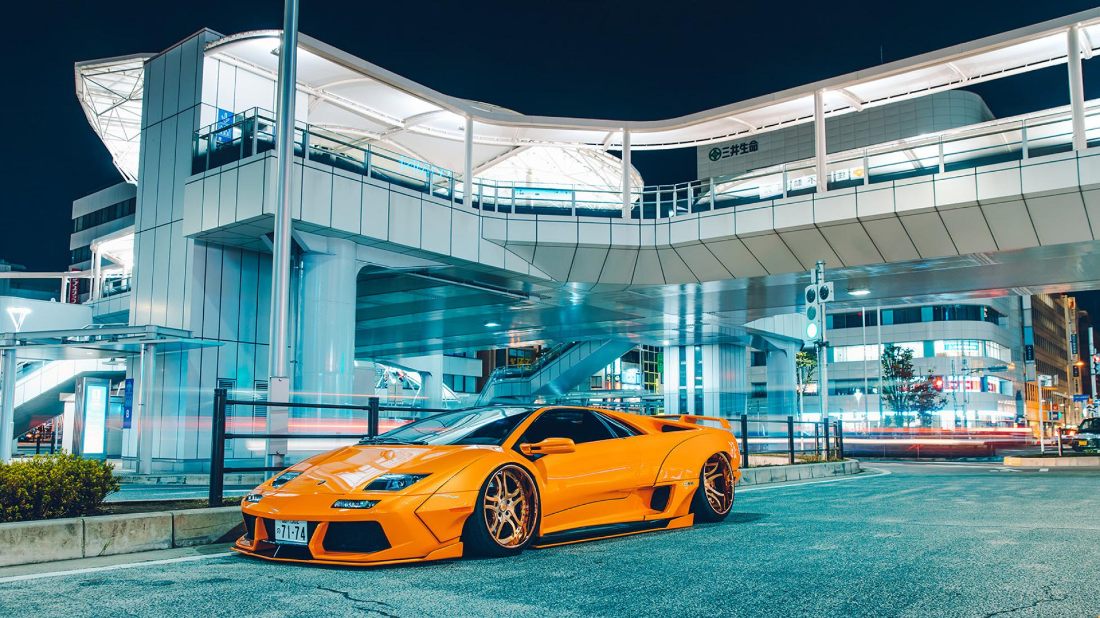
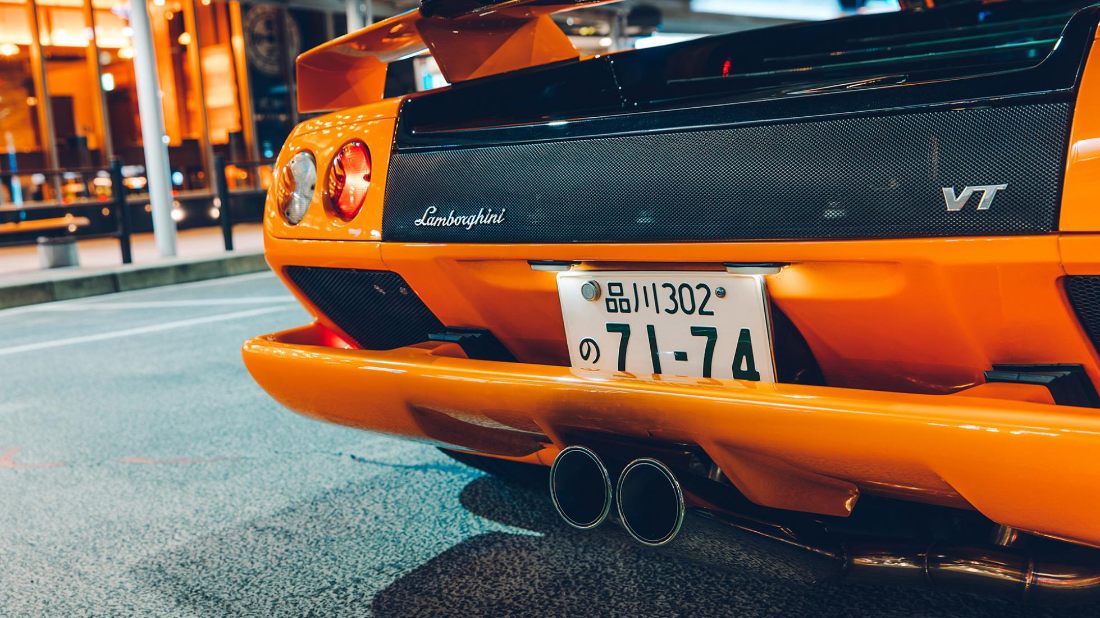
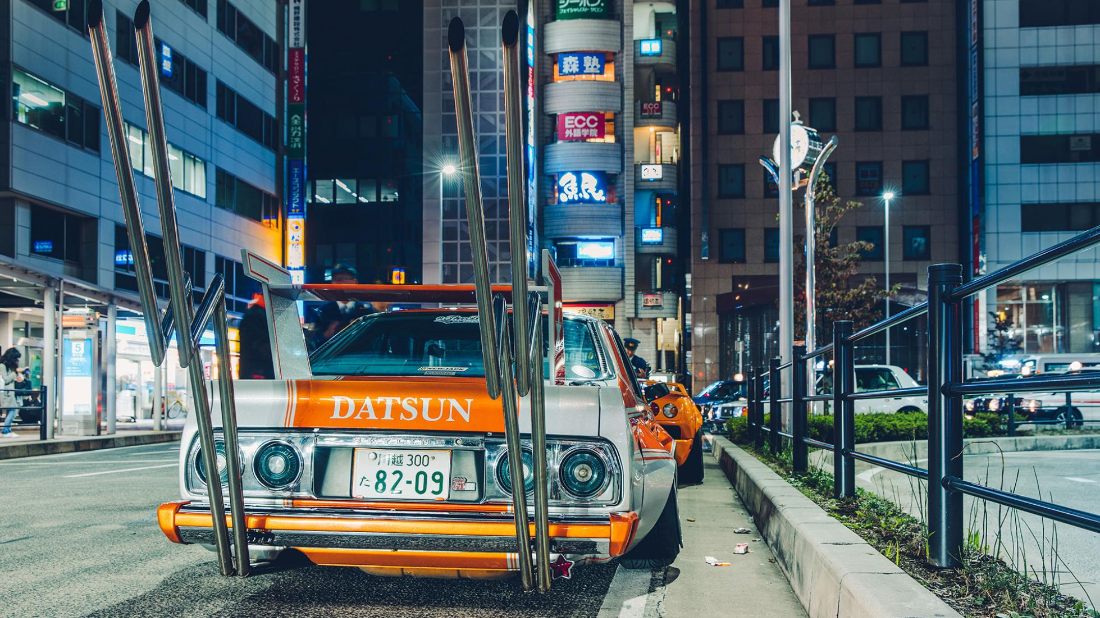
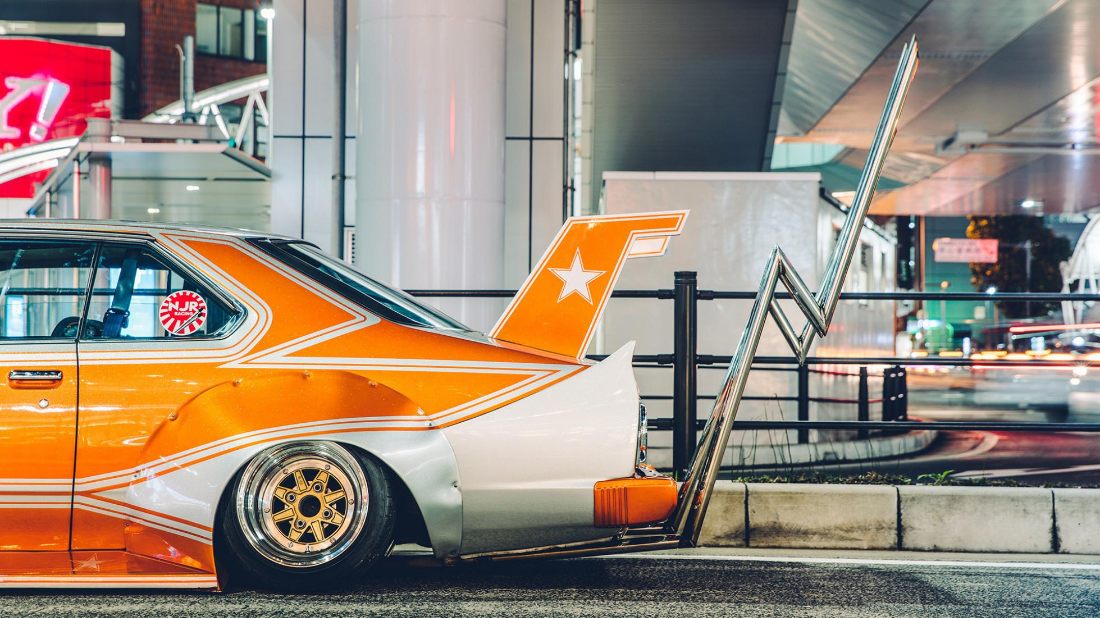
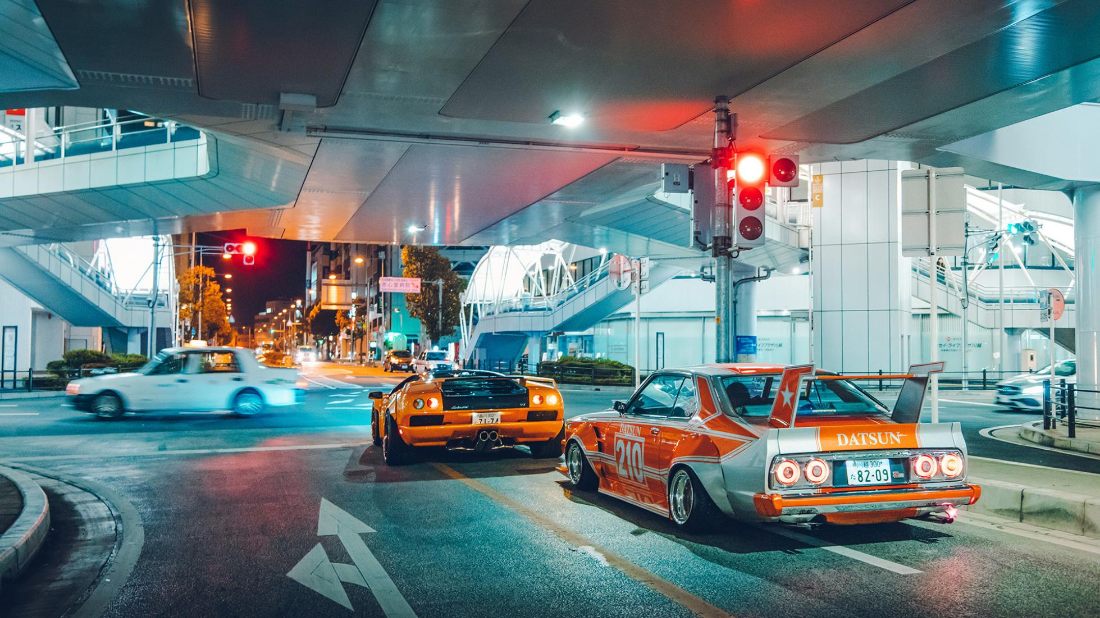
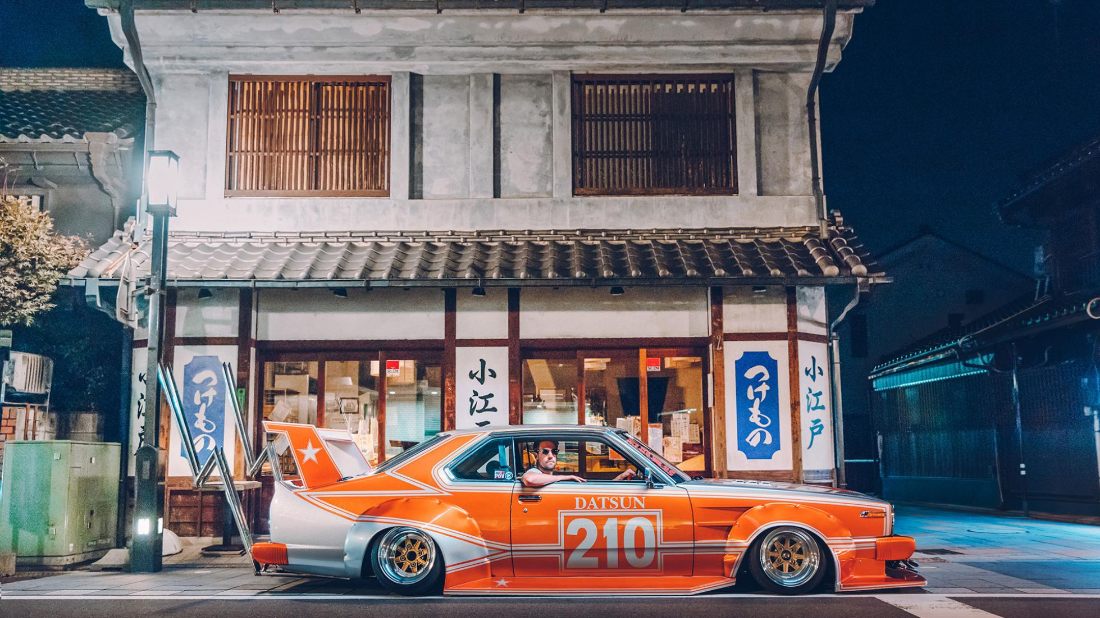
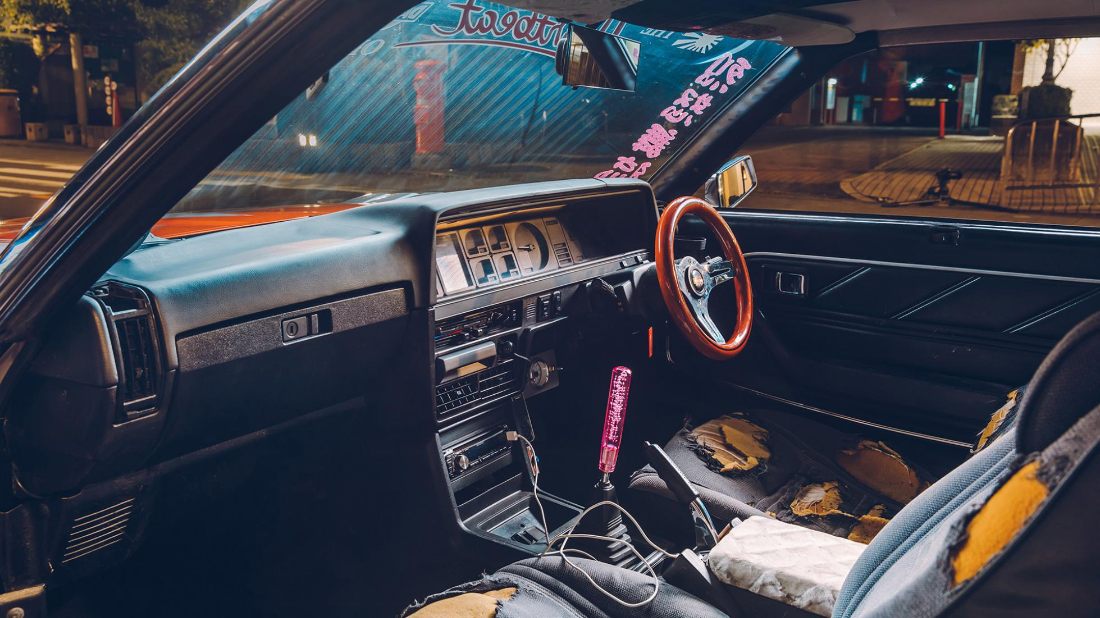
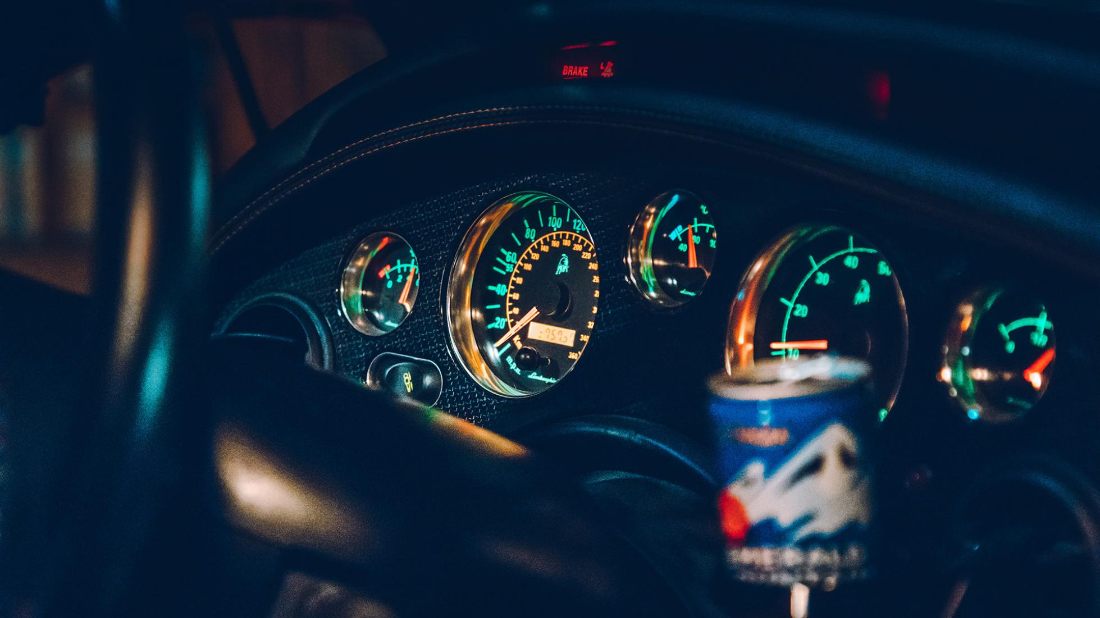
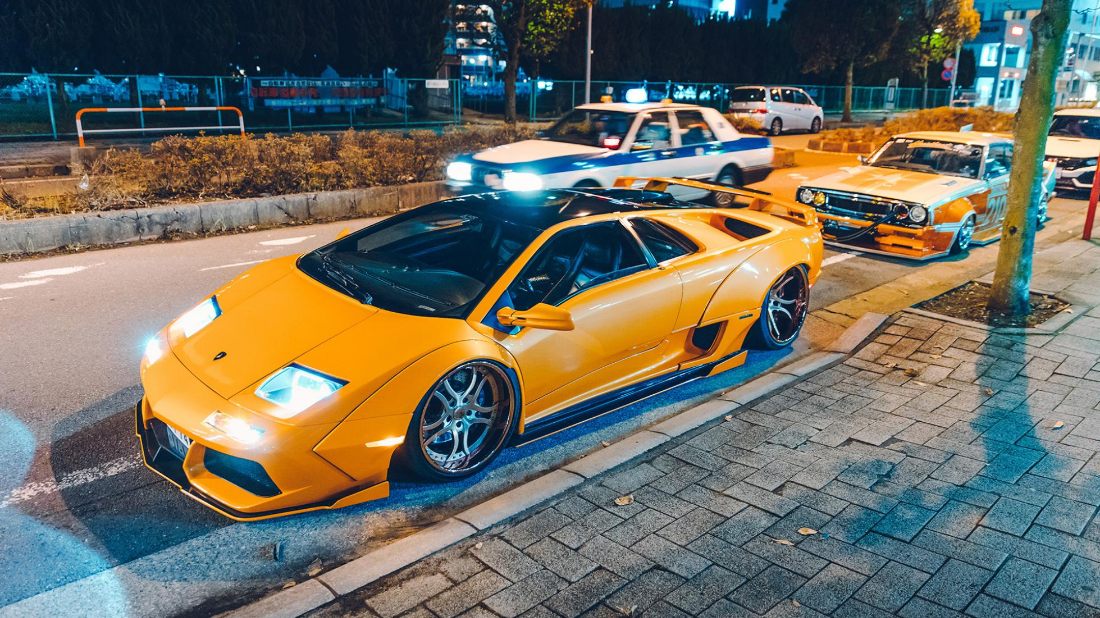
Inside, Bōsōzoku paraphernalia lines the walls; model cars, slammed scooters, worryingly right-wing, swastika-ridden Kanji stickers and a Japanese driving licence with a cat wearing a bandana on it. I purchase it, just in case we get pulled over again.
Not knowing how to say, “Please can I drive your pink pride and joy” in Japanese, I waggle my arms in some sort of steering wheel way and give two thumbs up. It works. But not knowing where I am or what the procedure of driving a car like this is, Hirokatsu takes the reins first.
With the passenger seat so low, I helplessly fall into the cabin when my centre of gravity goes past the point of no return. Inside, it’s filled with majestic Japanese retro trinkets; an ancient Cherry Coke, spindly pink gearstick (that looks like it’s from the accessories department of Ann Summers) and the obligatory packet of Marlboro cigarettes.
Even so, I throw some peace signs out the window while cruising down the Wangan – I’m living an Instagram dream.
Unlike last night’s cars, the big-winged and giant-splittered Celica doesn’t have the benefit of adjustable air suspension. Instead, to get that all-important stance, Hirokatsu just took a hacksaw to the suspension and lopped four turns of the spring out at each corner. Then added lots of camber. This has two effects: the ride is terrible and ground clearance abysmal. Not exactly handy when you have five feet of fibreglass hanging out in front of the car.
We bottom out as soon as we start rolling. Then again. And again. It’s like kayaking down a river with an inch of water. The only way to counteract the horrendous graunching under your coccyx is to read the road like a hesitant biker and weave around the smallest imperfections. This is part of the Bōsōzoku style of driving but also makes you look like a horrendous drunk driver. But I don’t care, it looks cool. Even for the locals, it’s hard to adjust to seeing such a madly proportioned caricature of a car on the road. It stands out from mainstream society like a sore thumb – just as intended.
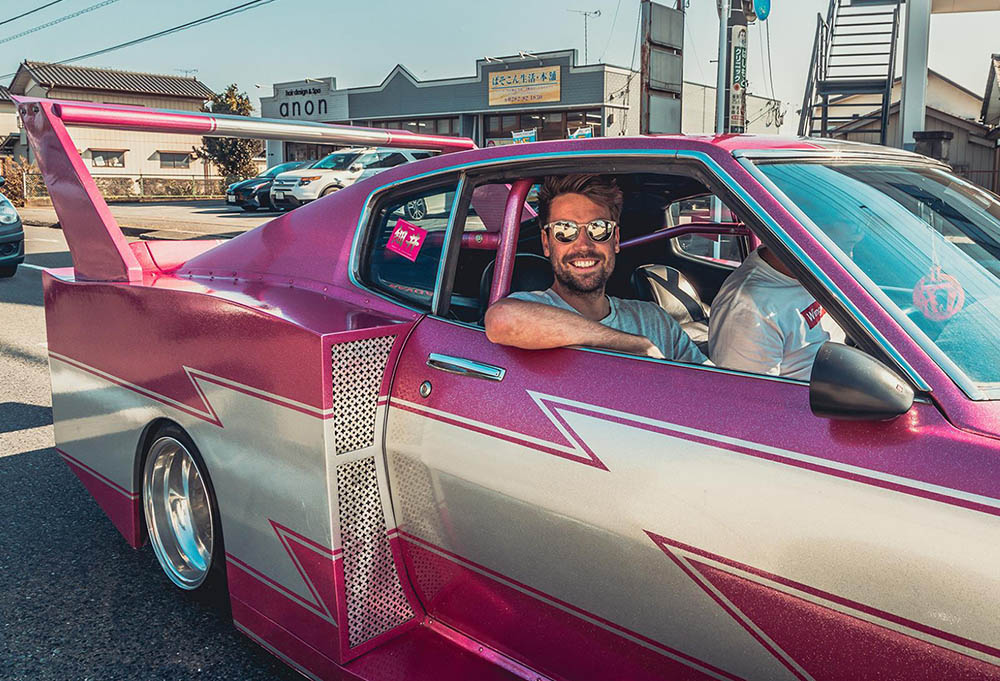
But now it’s my go. The first thing to adopt is the proper Bōsō driving position: massively reclined seat, right elbow perched on the window sill, right palm on top of the small-diameter wooden steering wheel while the left keeps the gearstick in check like a rudder. Which, ironically, is also similar in its action. With one solitary blip of the throttle, the ridiculously loud exhaust manifold erupts and shoots ear-splitting noise through the cabin and out the back. It’s addictive. I just endlessly rev it for laughs – and I’m not even trying to kick back against society.
Admittedly, shifting gears is interesting. With no synchromesh, you have to double declutch (great for the noise) but matching revs and getting the wobbly stick in gear in time requires a sort of double-jointed wrist action. This, while also having to negotiate manholes/speedbumps/lost Shiba dogs, plus lackadaisical steering, means I grind a couple of gears. Sorry, Hirokatsu.
Even so, I throw some peace signs out the window while cruising down the Wangan – I’m living an Instagram dream. But one so good it doesn’t need a poxy filter. Not wanting to nerf the front splitter into a kerb, I call time. But only because I have one last box to tick: riding a Bōsōzoku motorbike.
Day Three
Not being the most experienced biker in the world, I don’t want to start on a massive, looney, air-horned zinger of a bike. Luckily, Mark has been hit up on Line by the owner of a perfect Bōsō learner training wheels: a slammed Honda monkey bike, complete with side satchel to hide my excuses in.
That night we meet Teru. Teru looks like a sort of Japanese crossbreed of Pharrell Williams and Mahatma Gandhi. Either way, he’s allowed me to ride his Honey-I-Shrunk-the-motorbike while he gives chase in a Shakotan (a slammed, blistered-arched old car and another strand of Bōsōzoku) Datsun B110.
With a candy red colander helmet on my bonce, it takes about three minutes to kickstart the thing alive. We’re off… which is instantly a massive mistake. With the seat coming up to my shin, sitting on it means having to sprawl my lanky legs out and above my ears to get my feet on the pegs. And never has such a small thing made so much noise. Don’t get me wrong; it sounds terrific but I’m terrified. The boomerang-shaped handlebars make the steering stupidly quick, which, with the foot pegs millimetres off the floor, mean they catch each turn, nearly throwing me off.
At the bottom of an intestinal slip road off Tokyo’s Bayshore route is Daikoku PA, a service station car park. With sparks flying off both the monkey bike and the undertray of the slammed B110, we pull in and meet a proper Bōsōzoku biker gang. Looking frightfully intimidating with laced-up boots, military-spec haircuts and scary jackets, they lean menacingly on their retro bikes which are covered in Japanese Imperial flags and Imperial kamons (both inseparable symbols of World War II). Instantly, the worrying, unsavoury images of Bōsōzoku come flooding back.
Luckily, it’s all a facade. Turns out they’re a new breed of Kyushakai – a more respectful group of ex- Bōsōzoku bikers that have outgrown their youthful delinquency but clung on to the visuals.
Striking up enough of a rapport, they allow me to have a go on their bikes, even handing over a jacket so I look part of the crew. Is this acceptance? Unfortunately, I don’t stick around to find out. I’ve had too much fun over the last few days making my Bōsōzoku dream come true. Plus, I can’t afford to lose my index finger at the initiation ceremony – my E.T. impression is too good to sacrifice.
